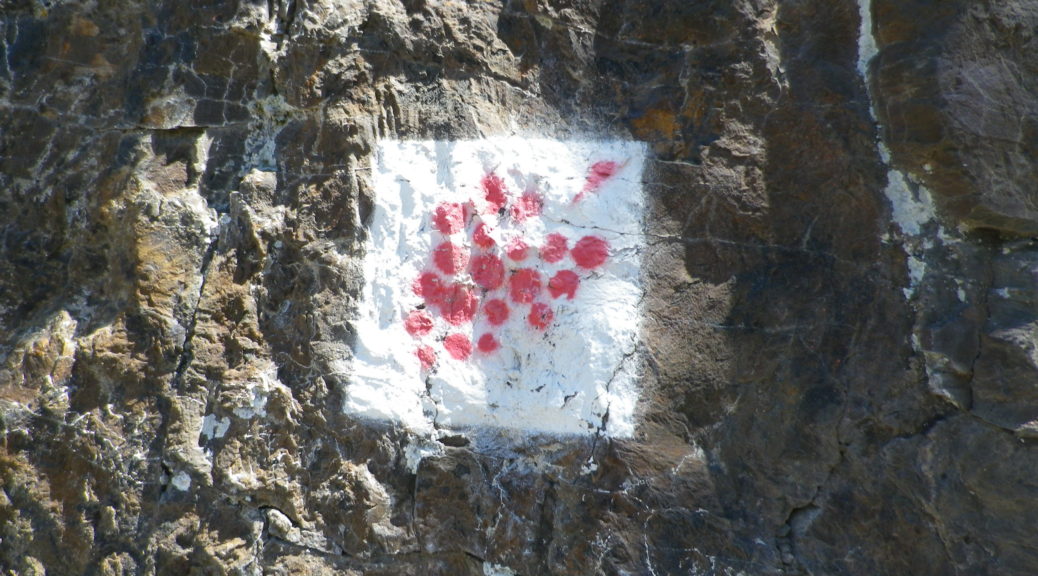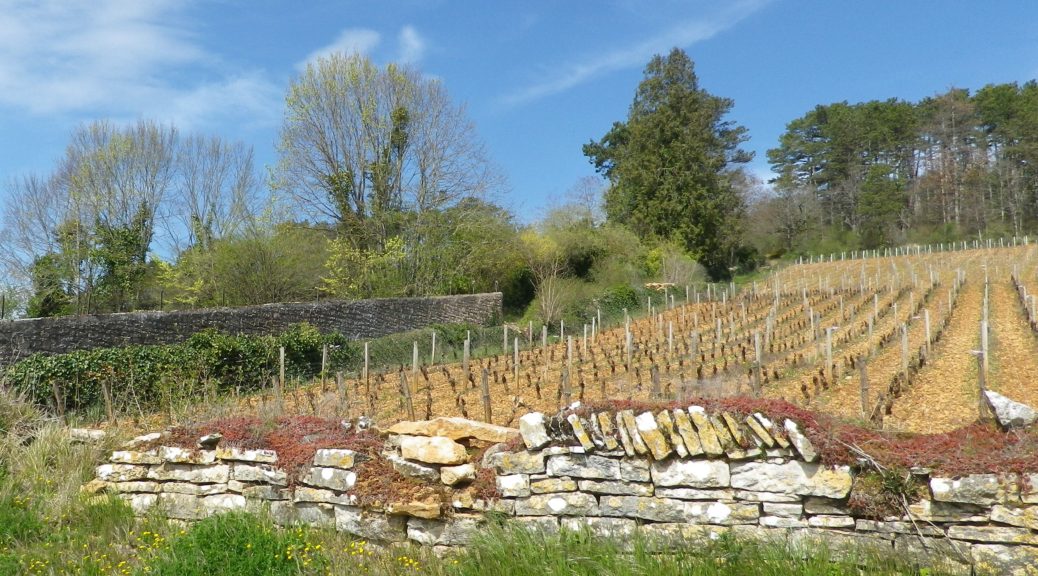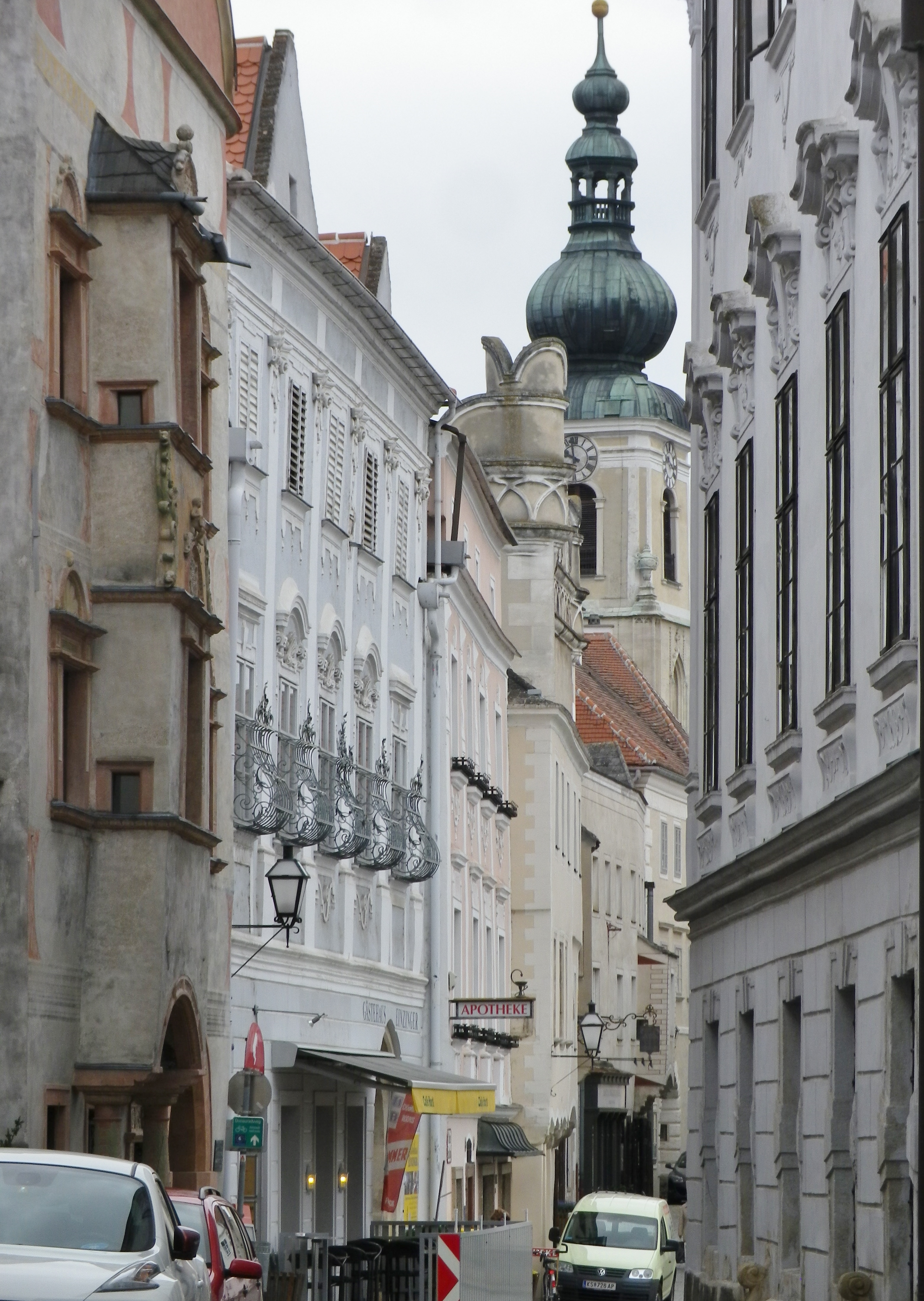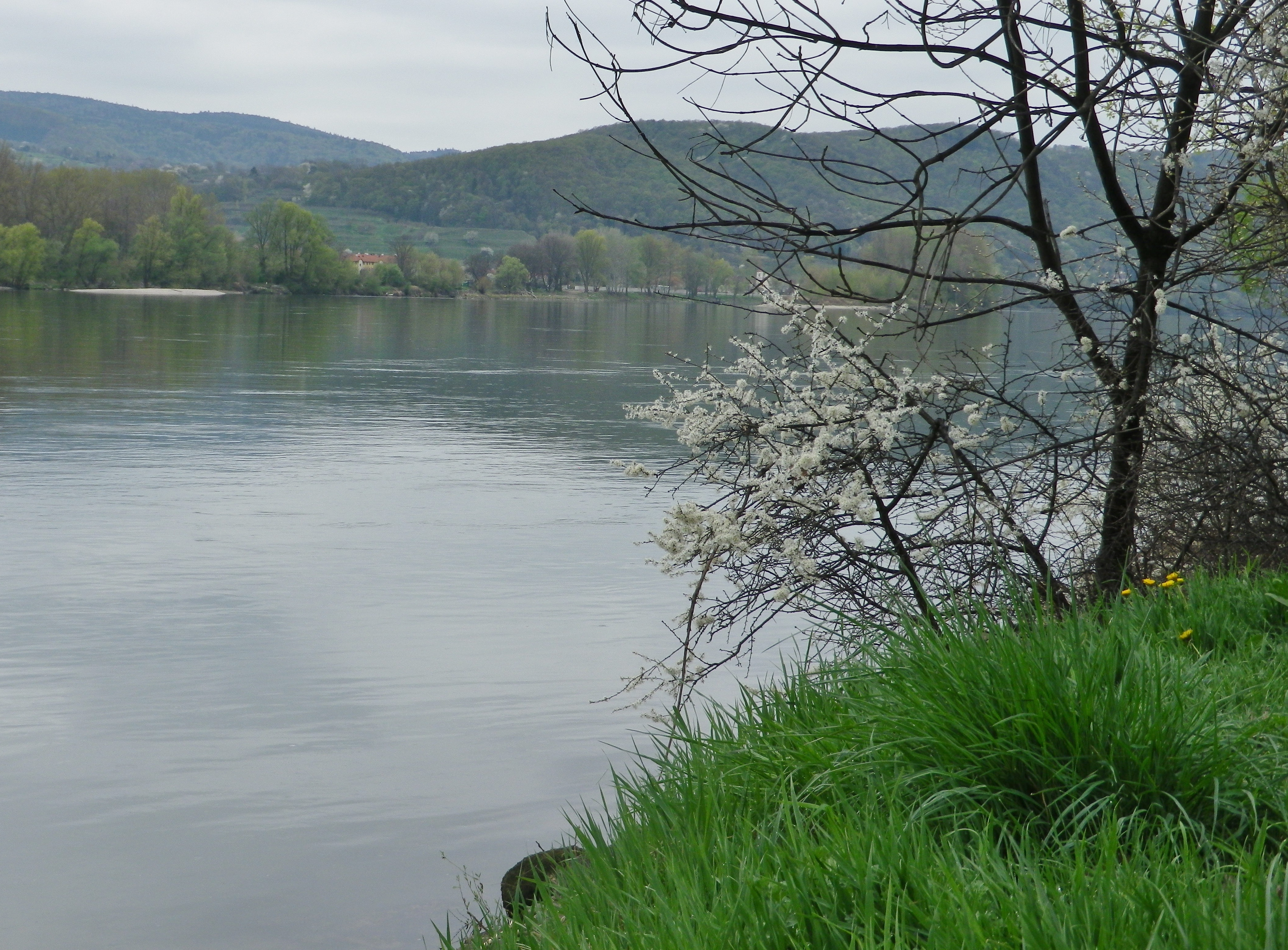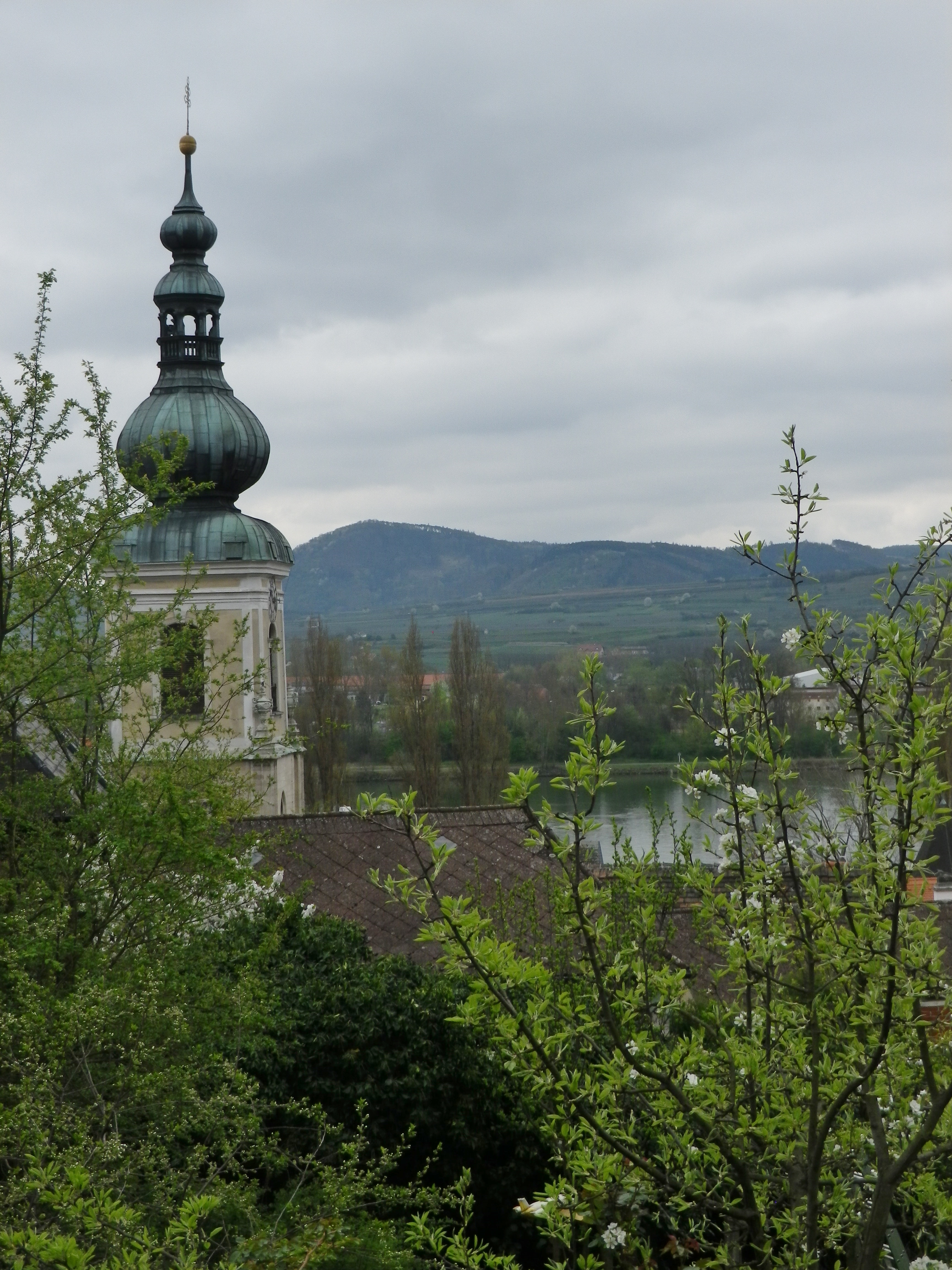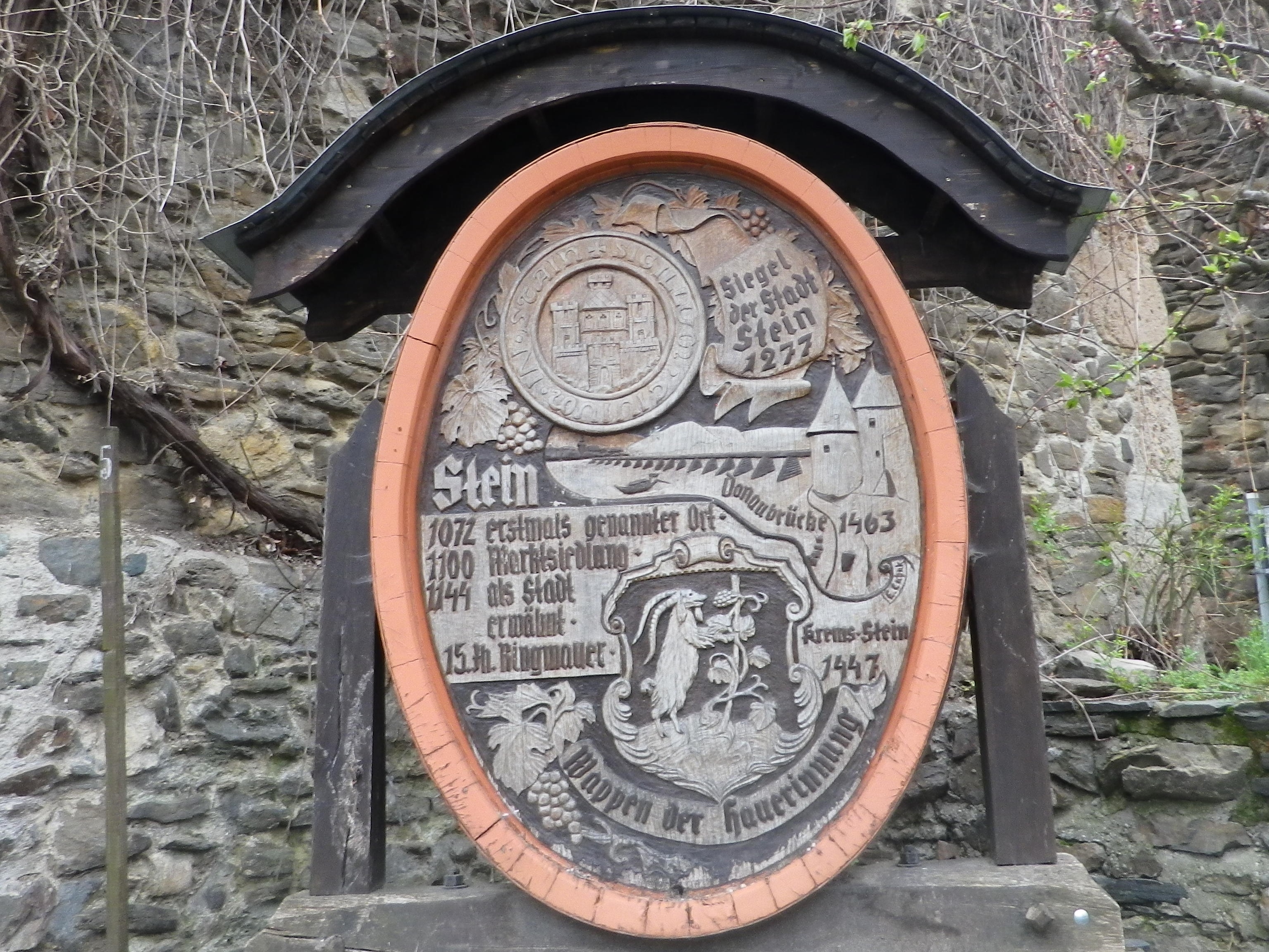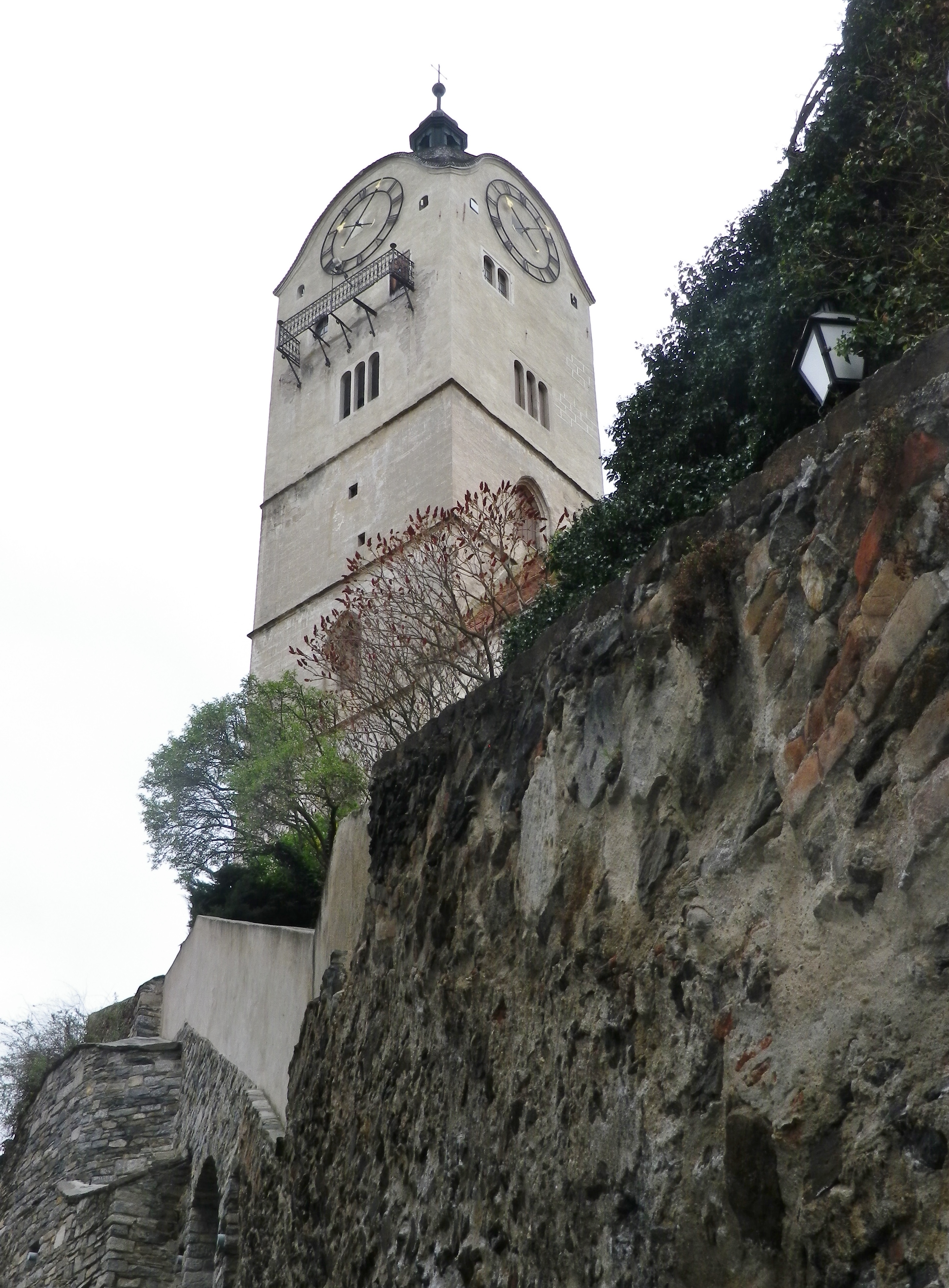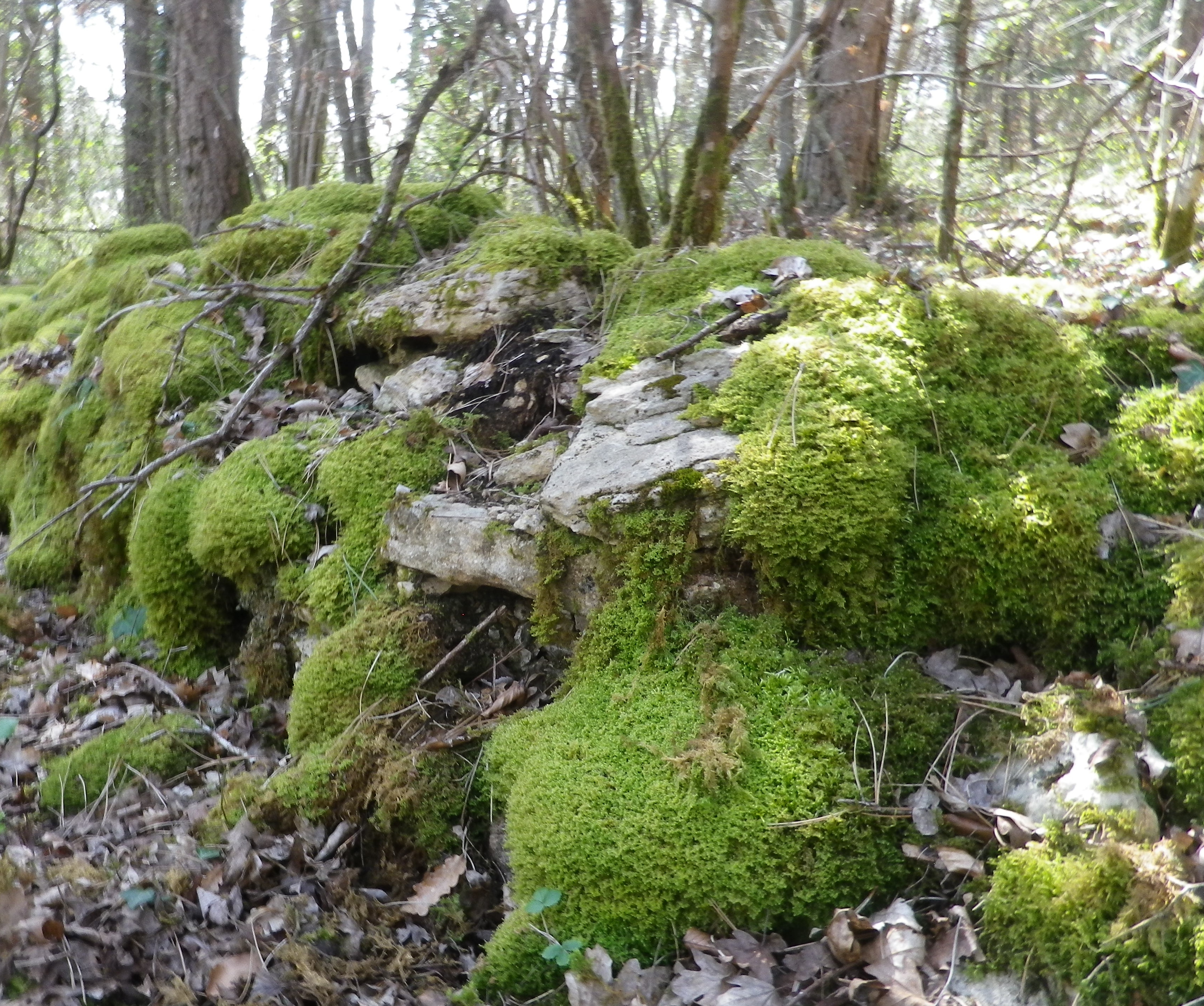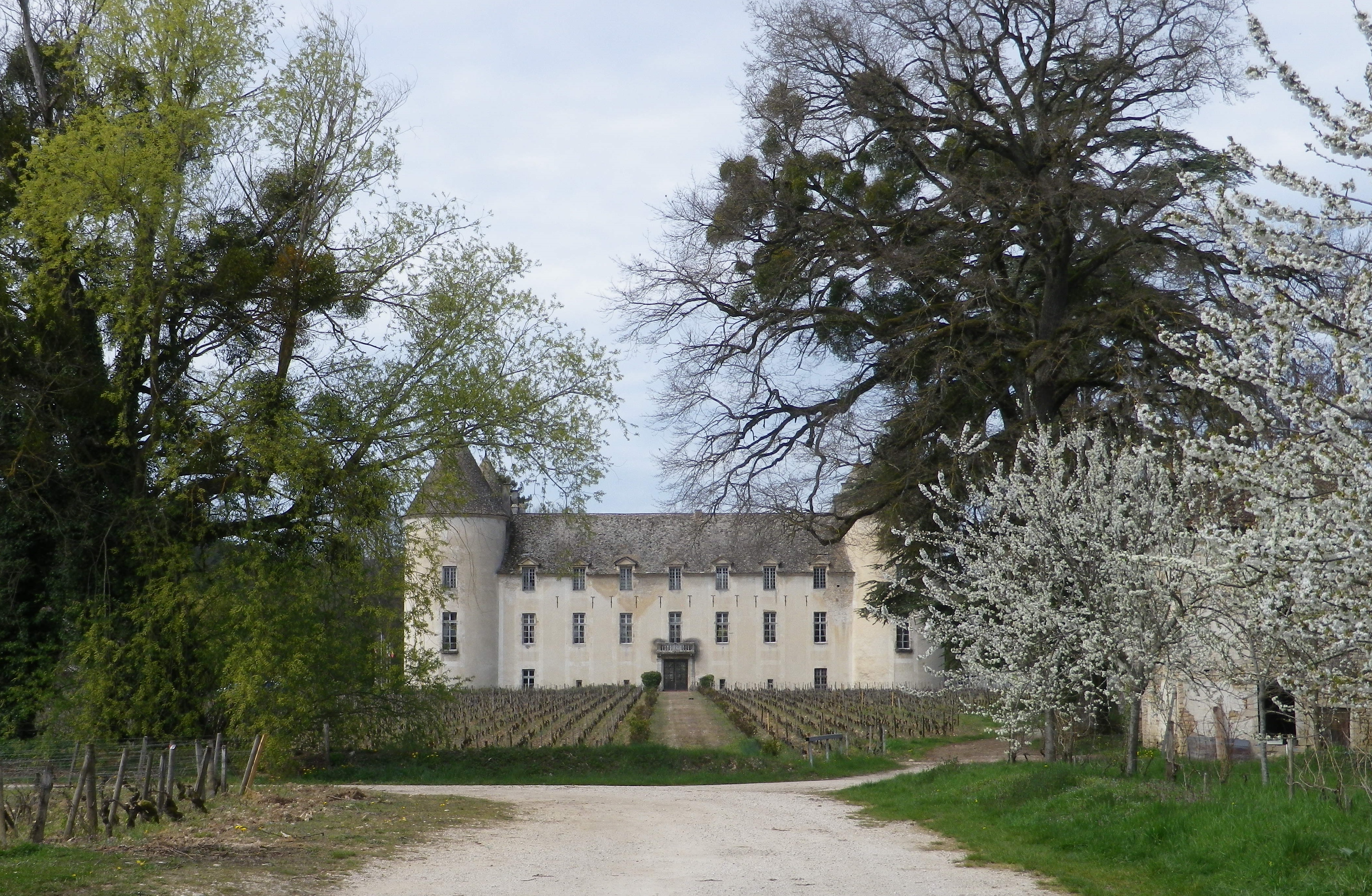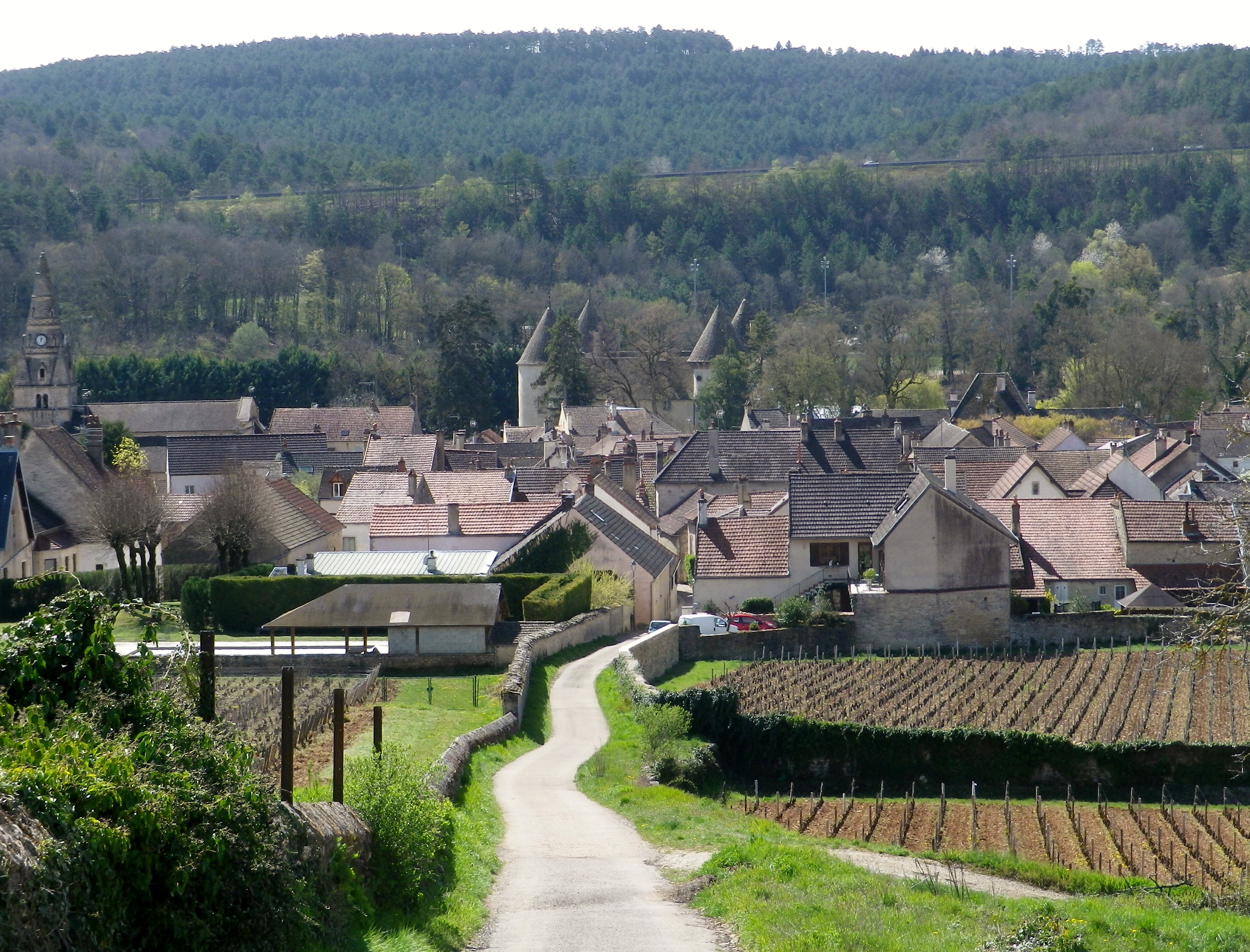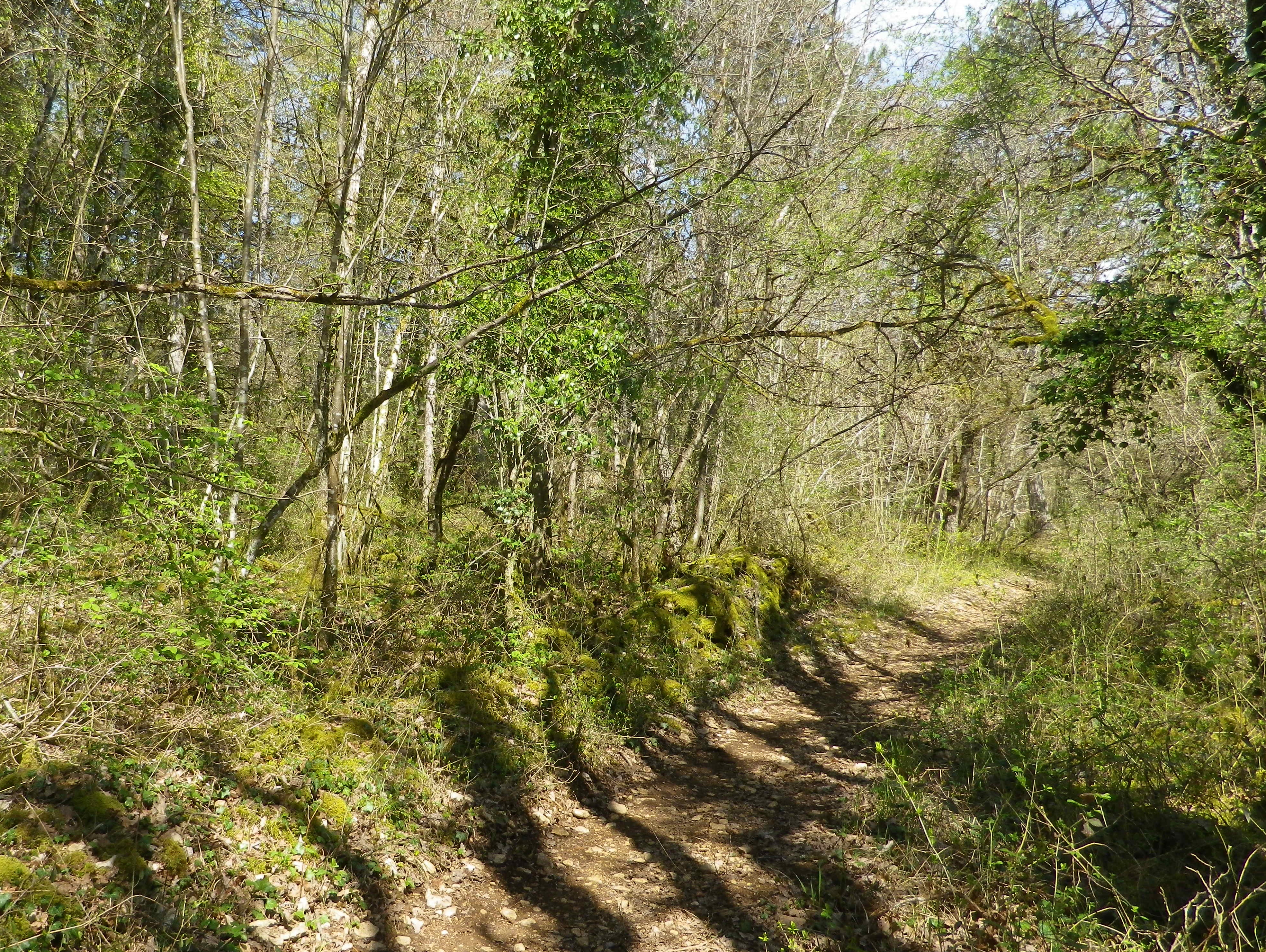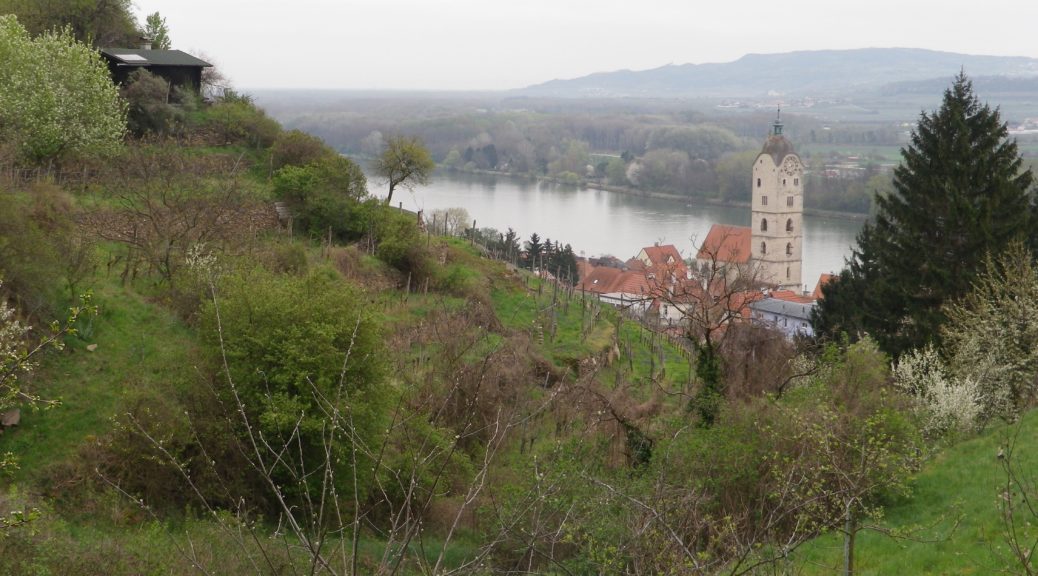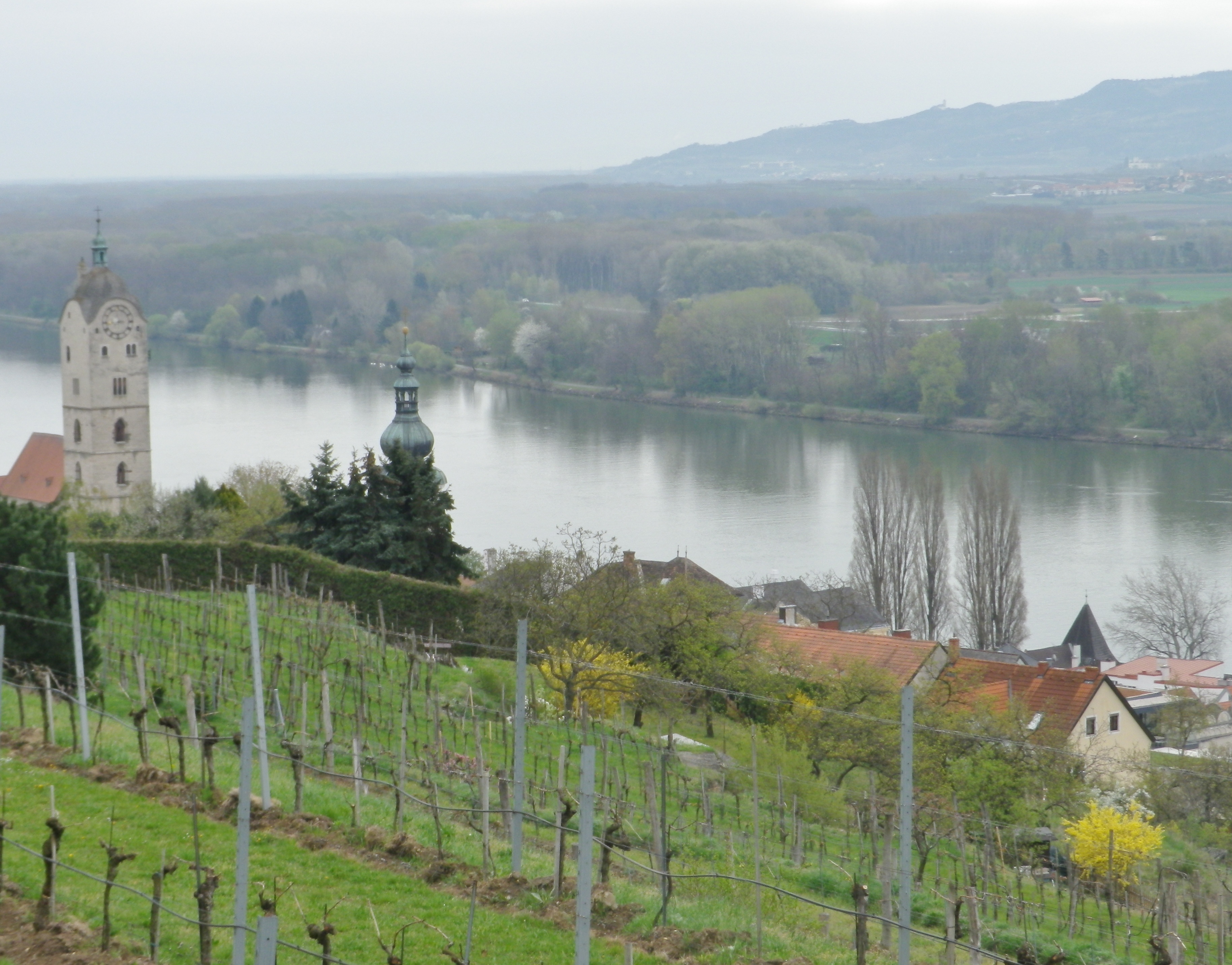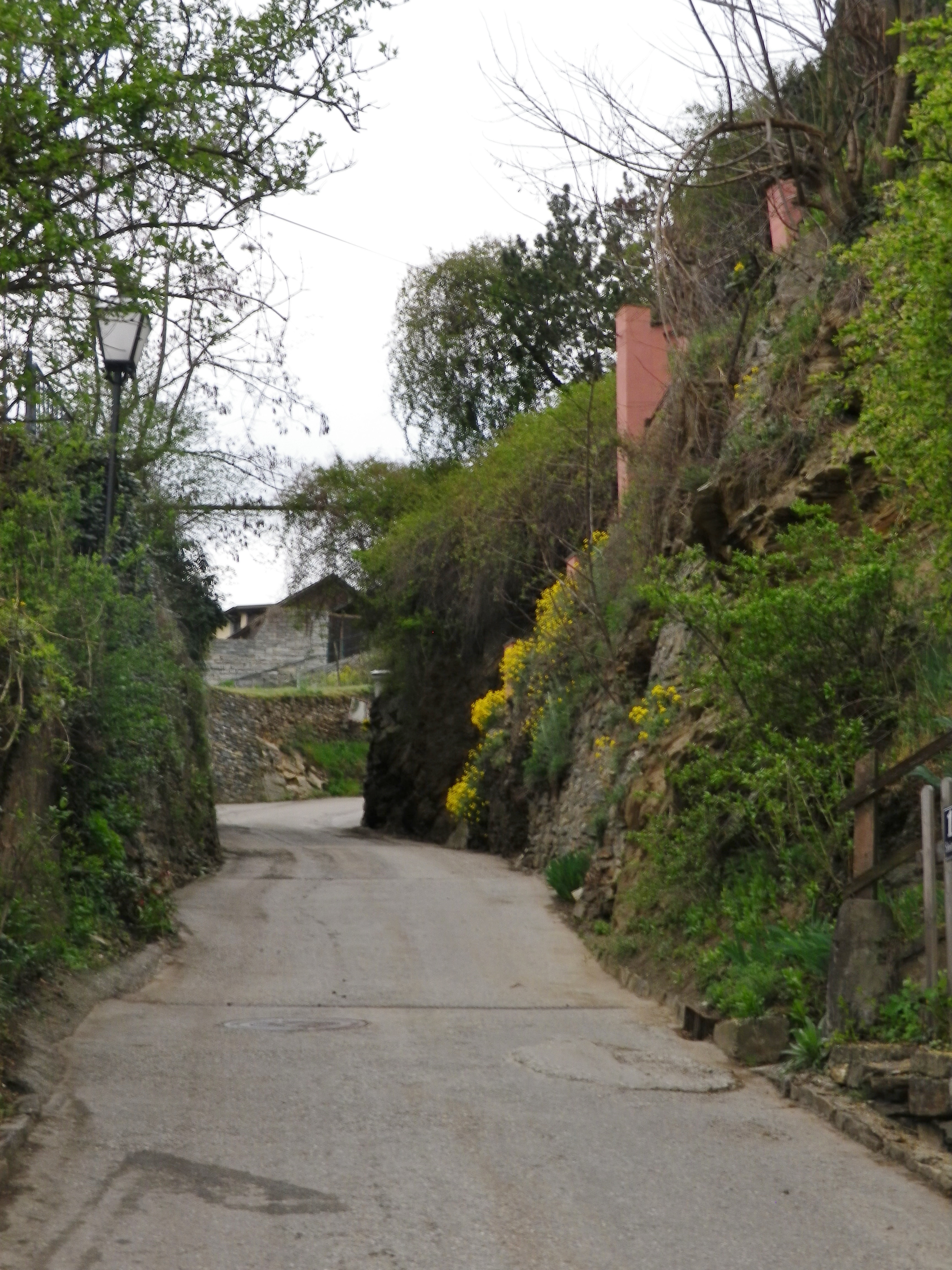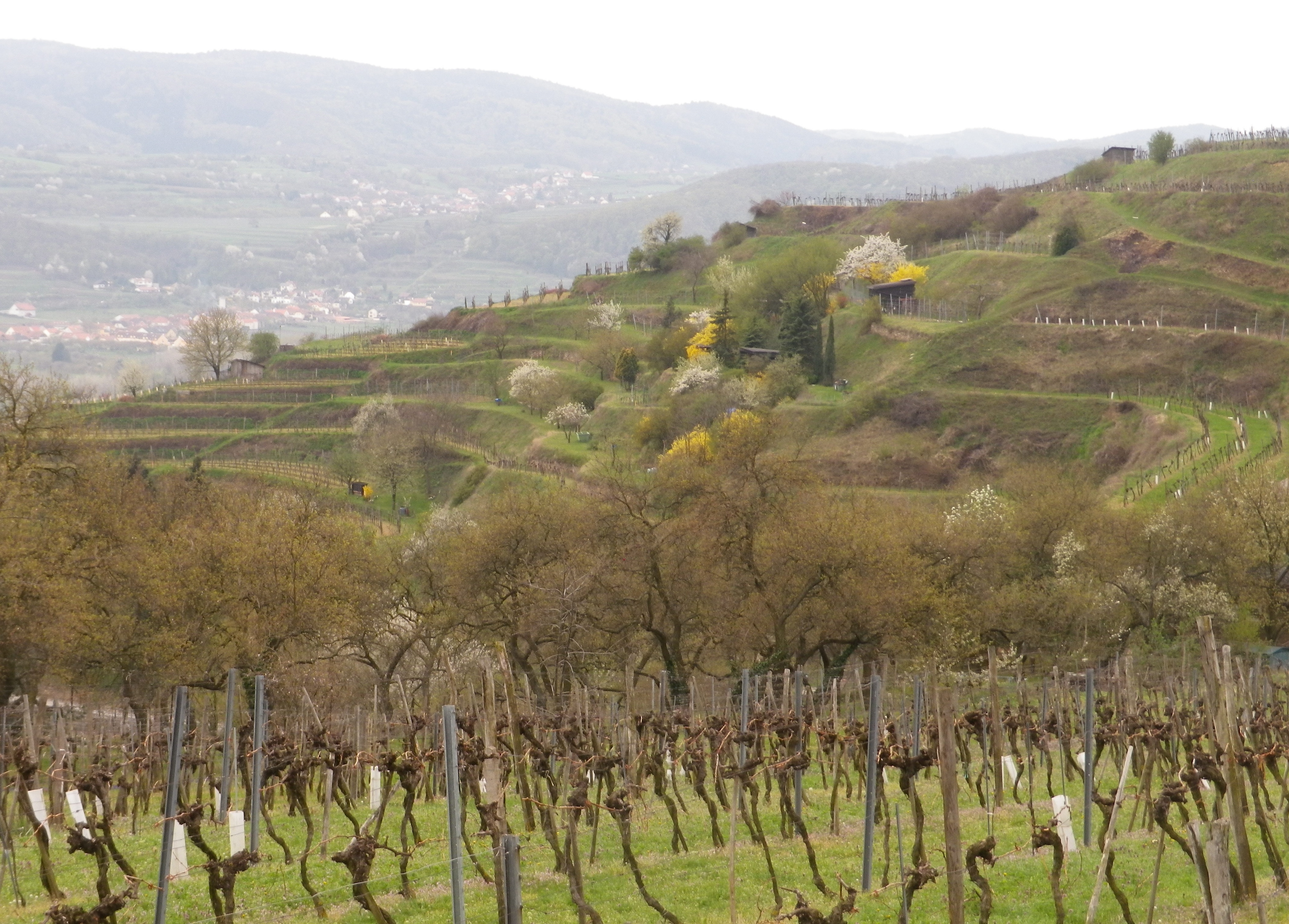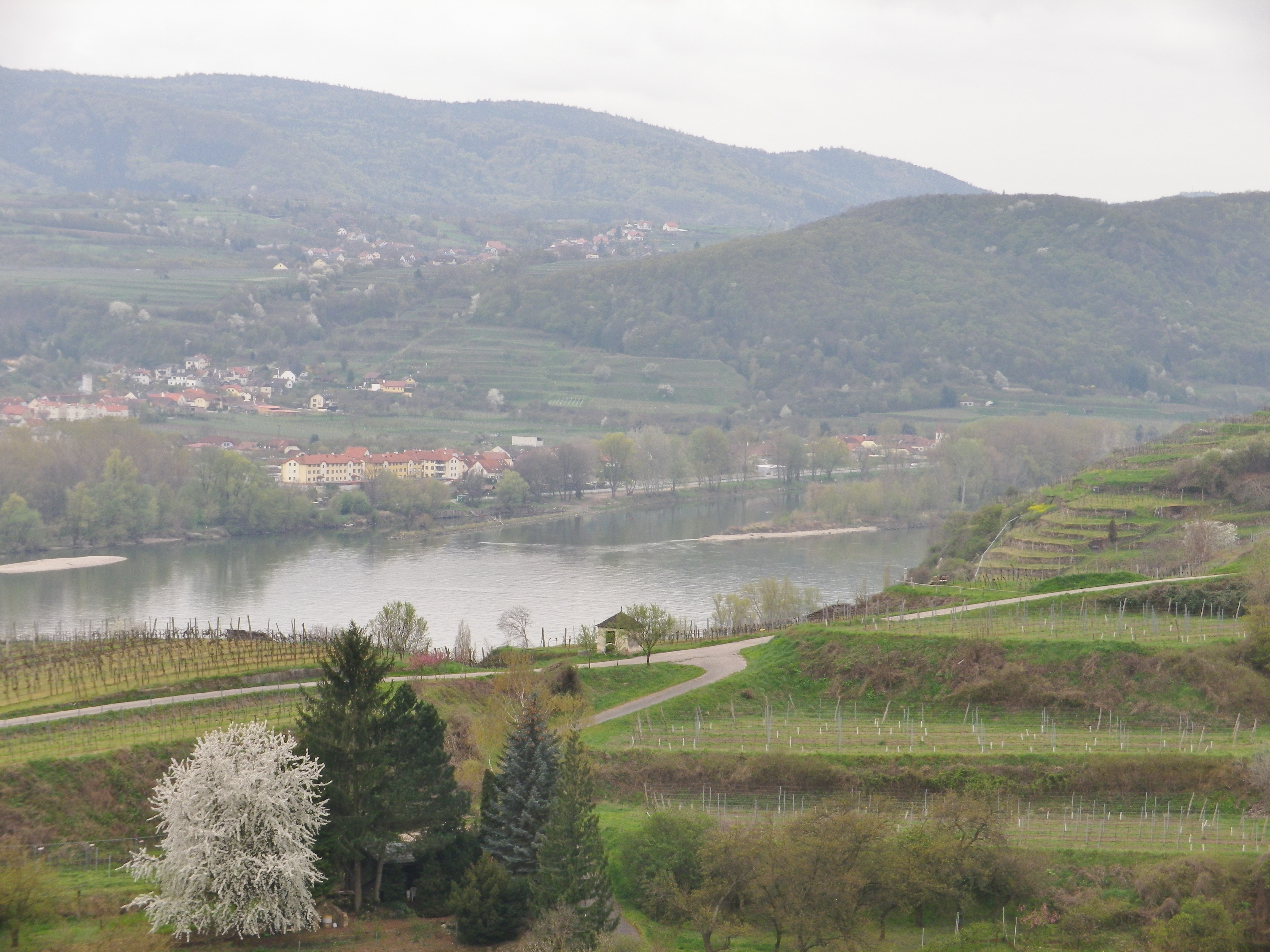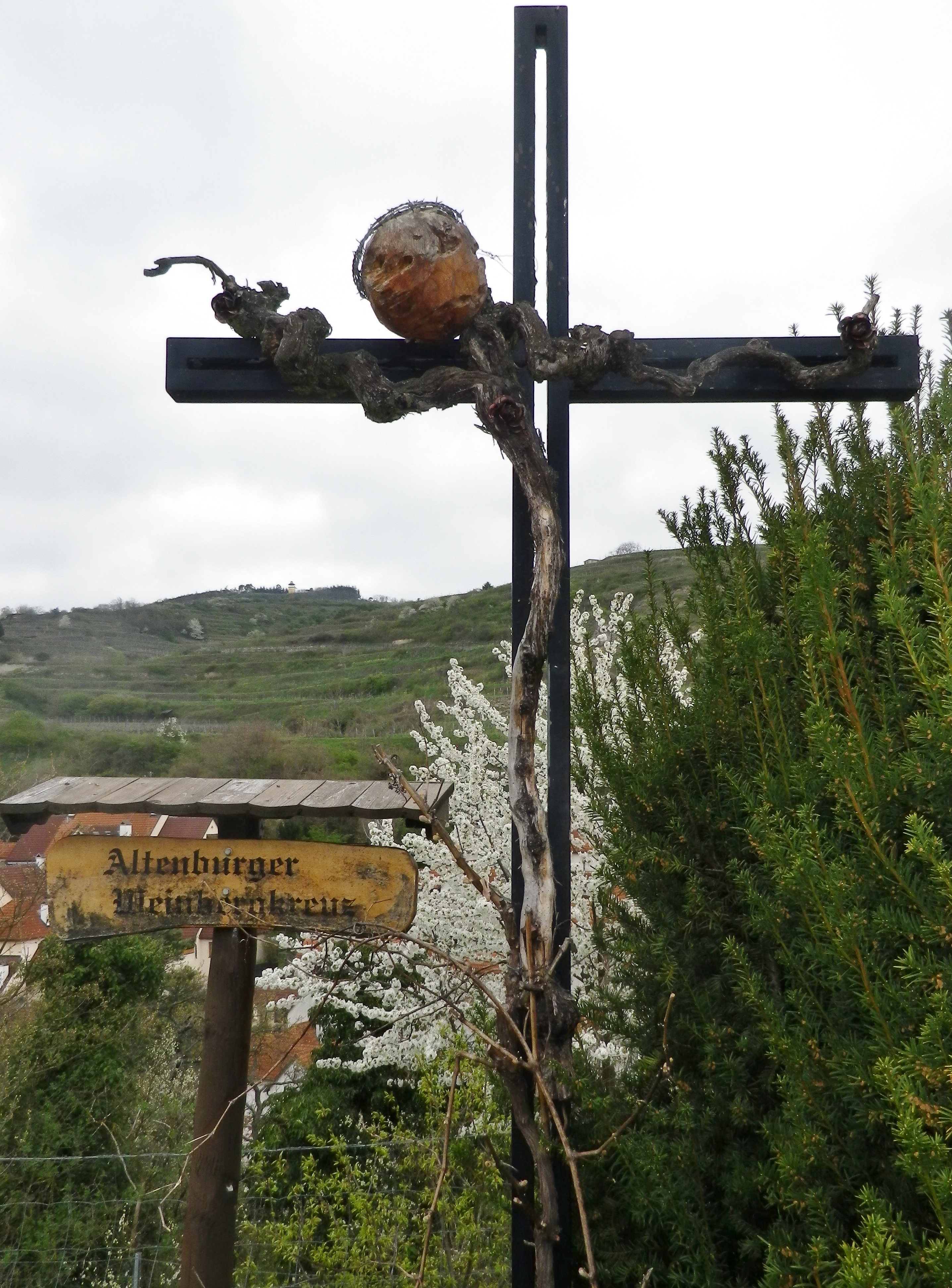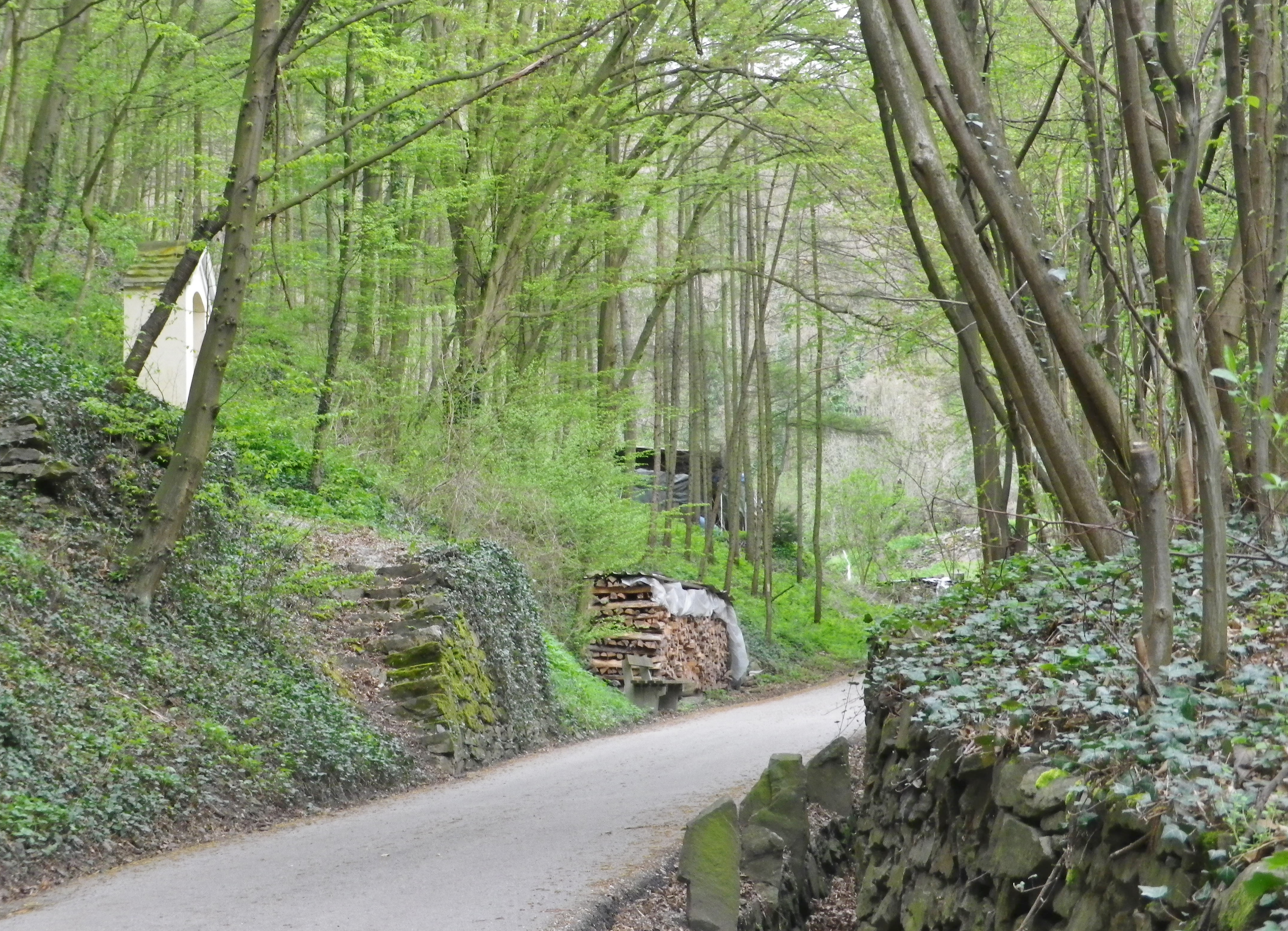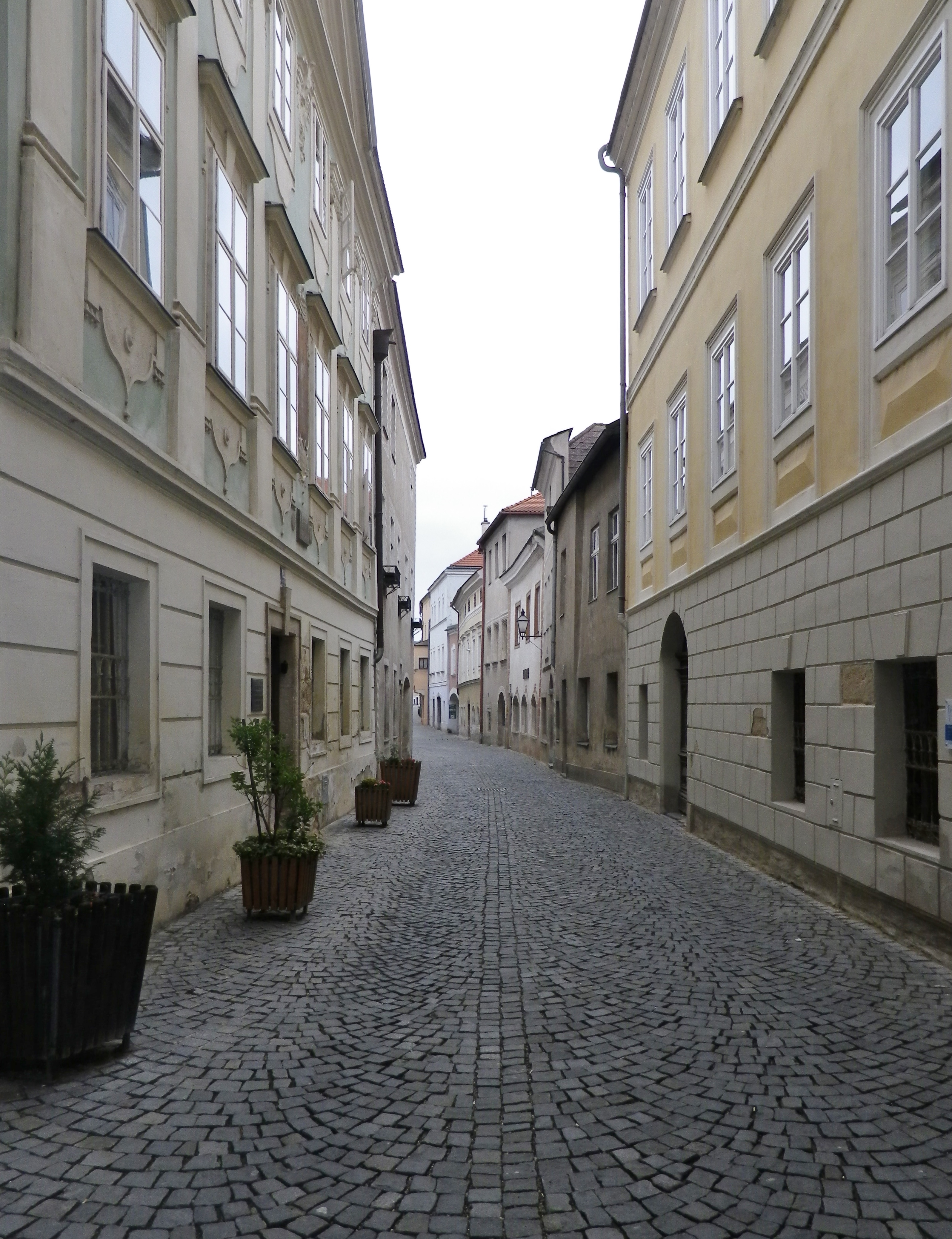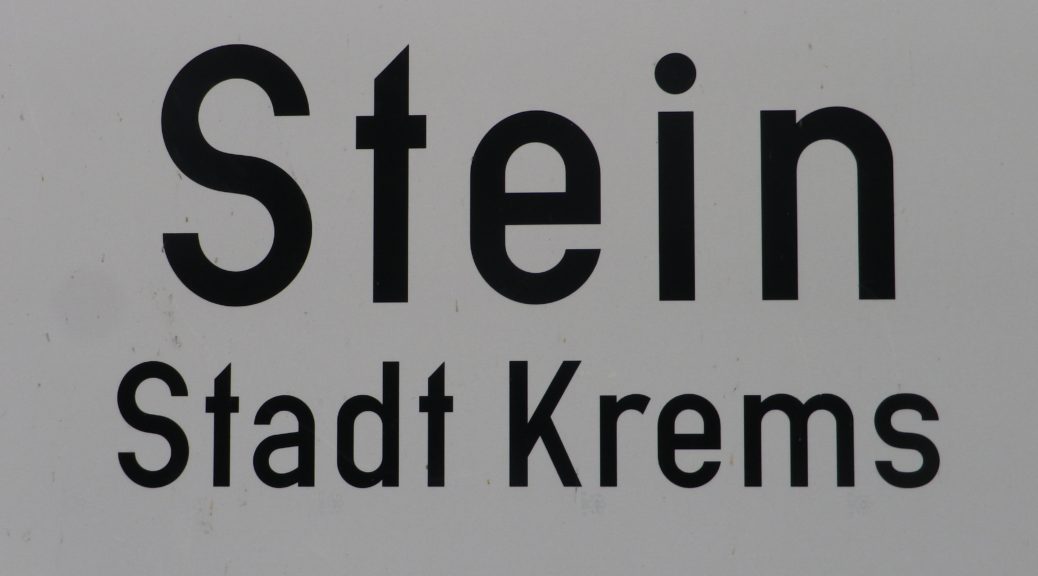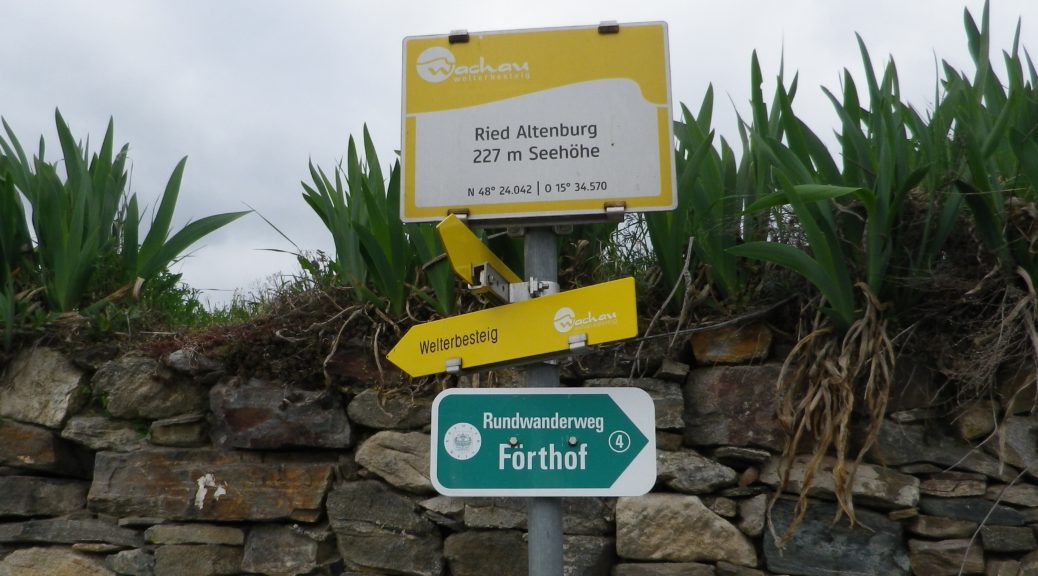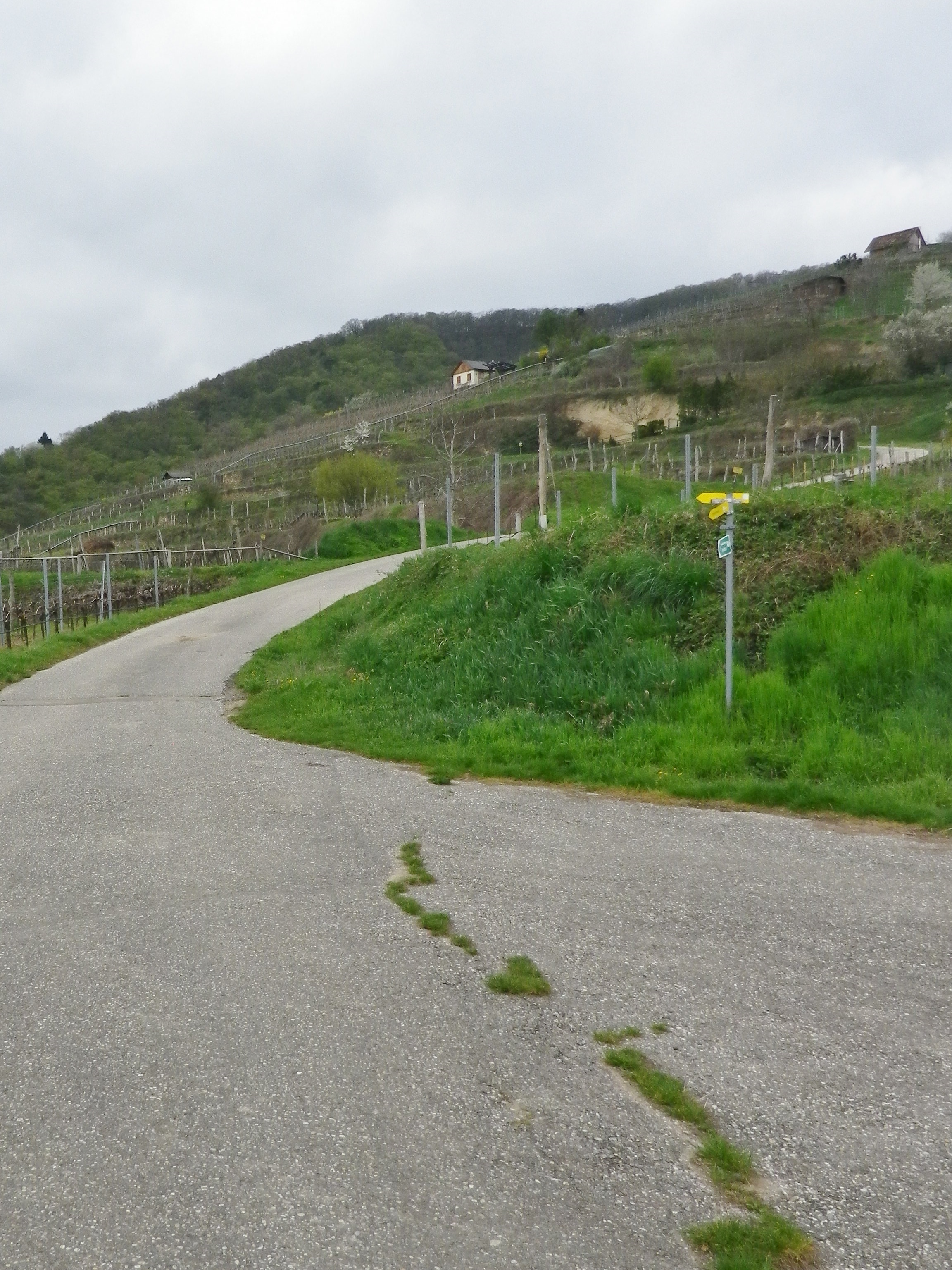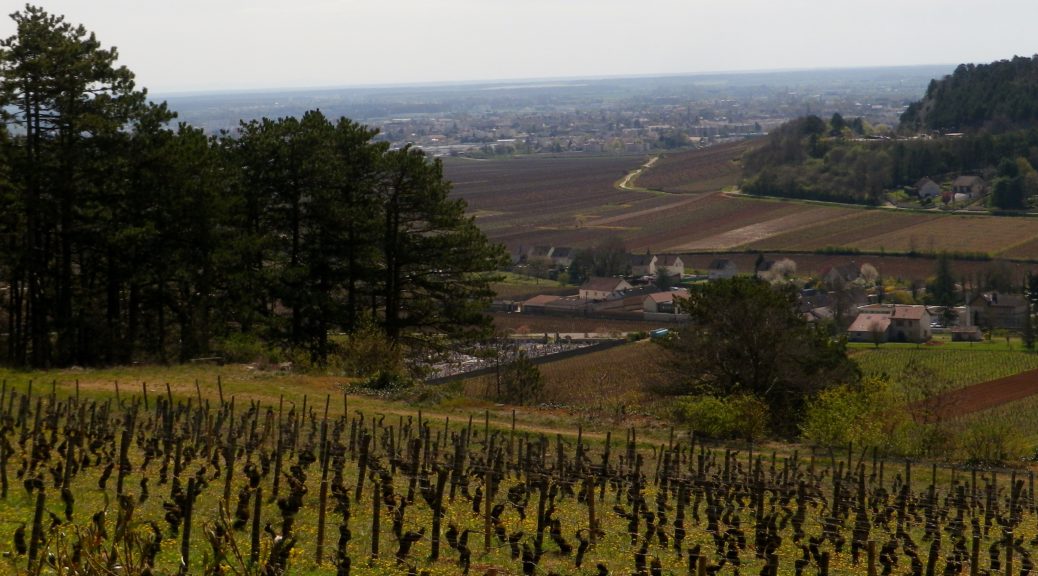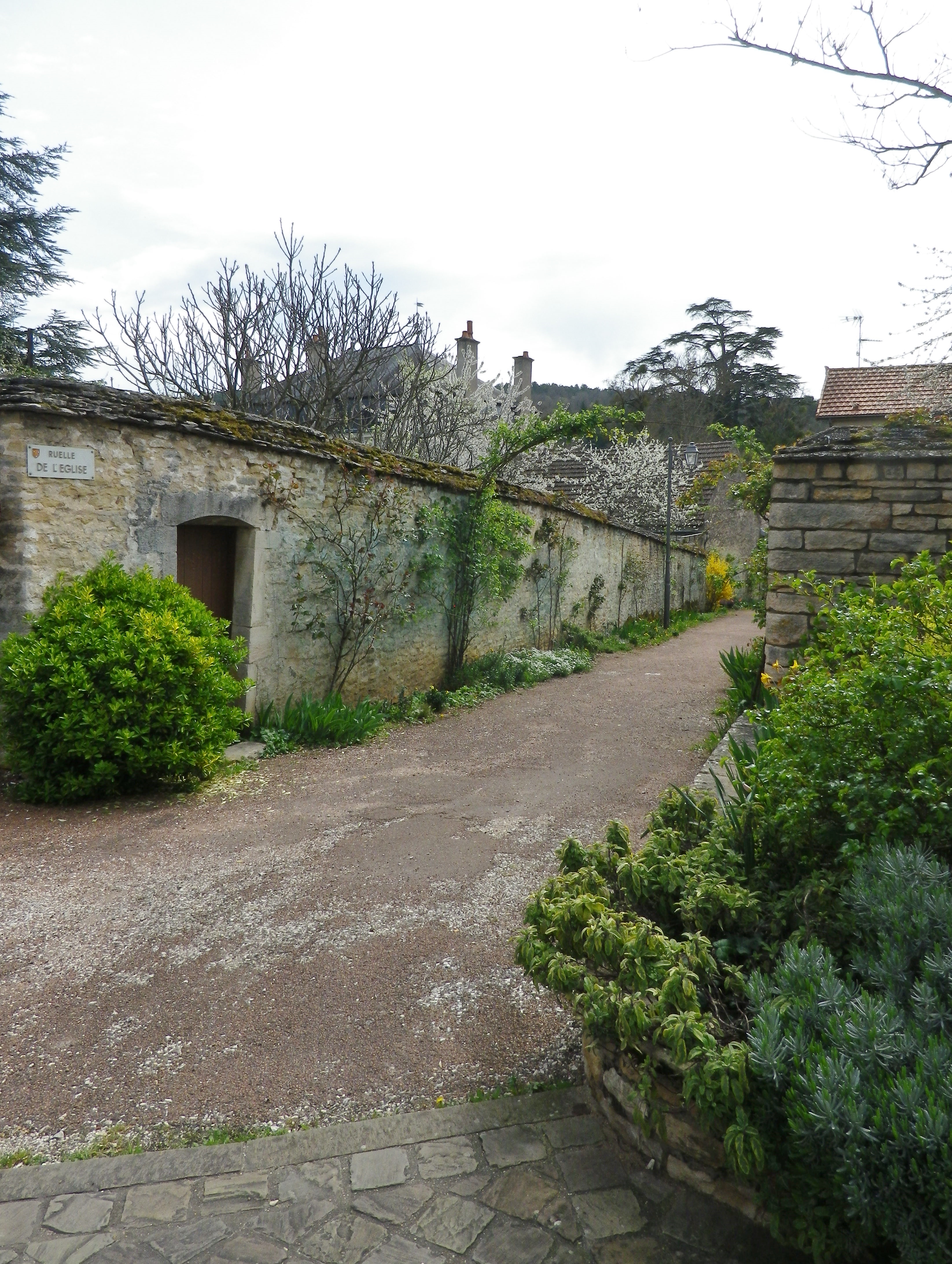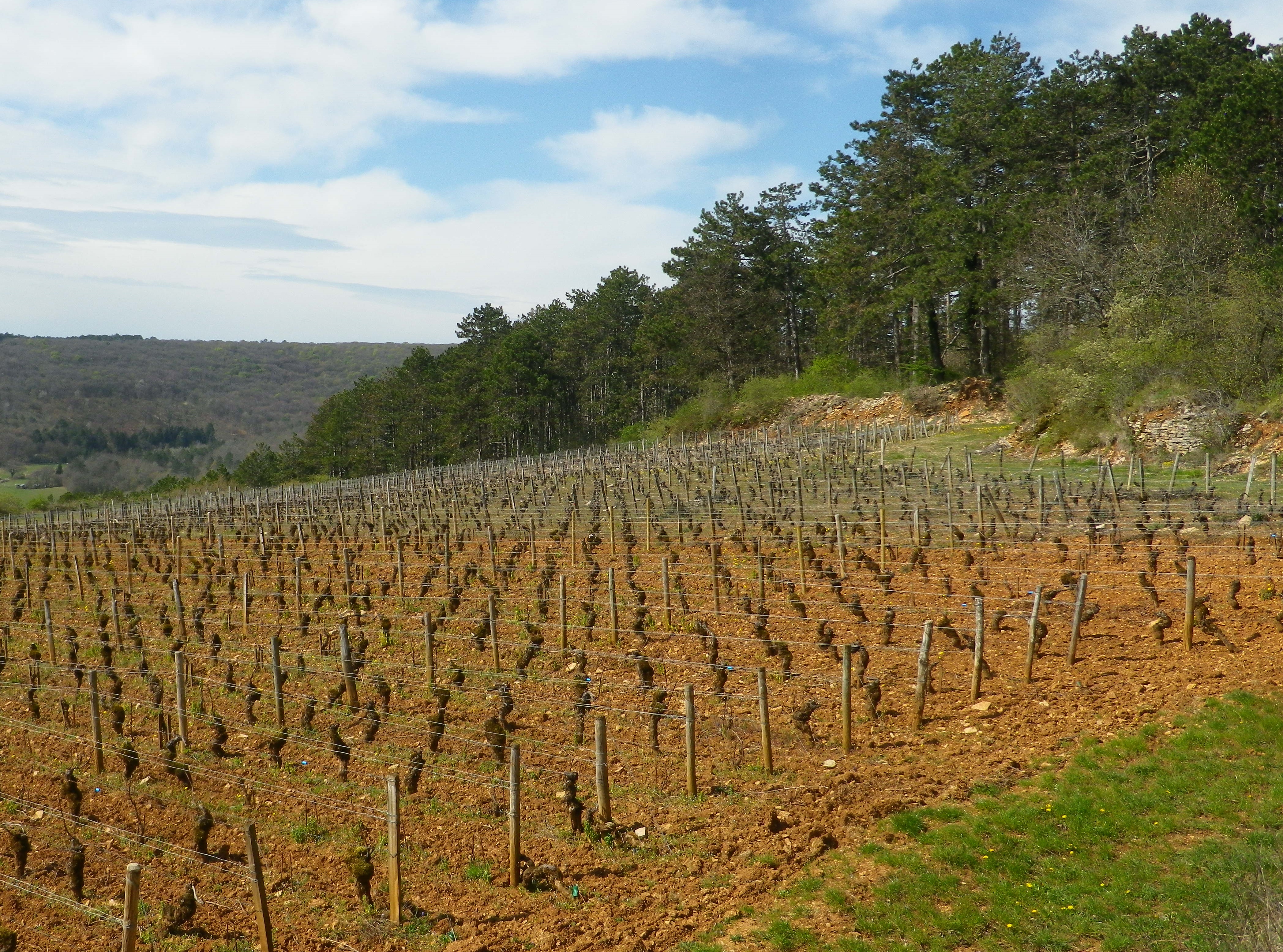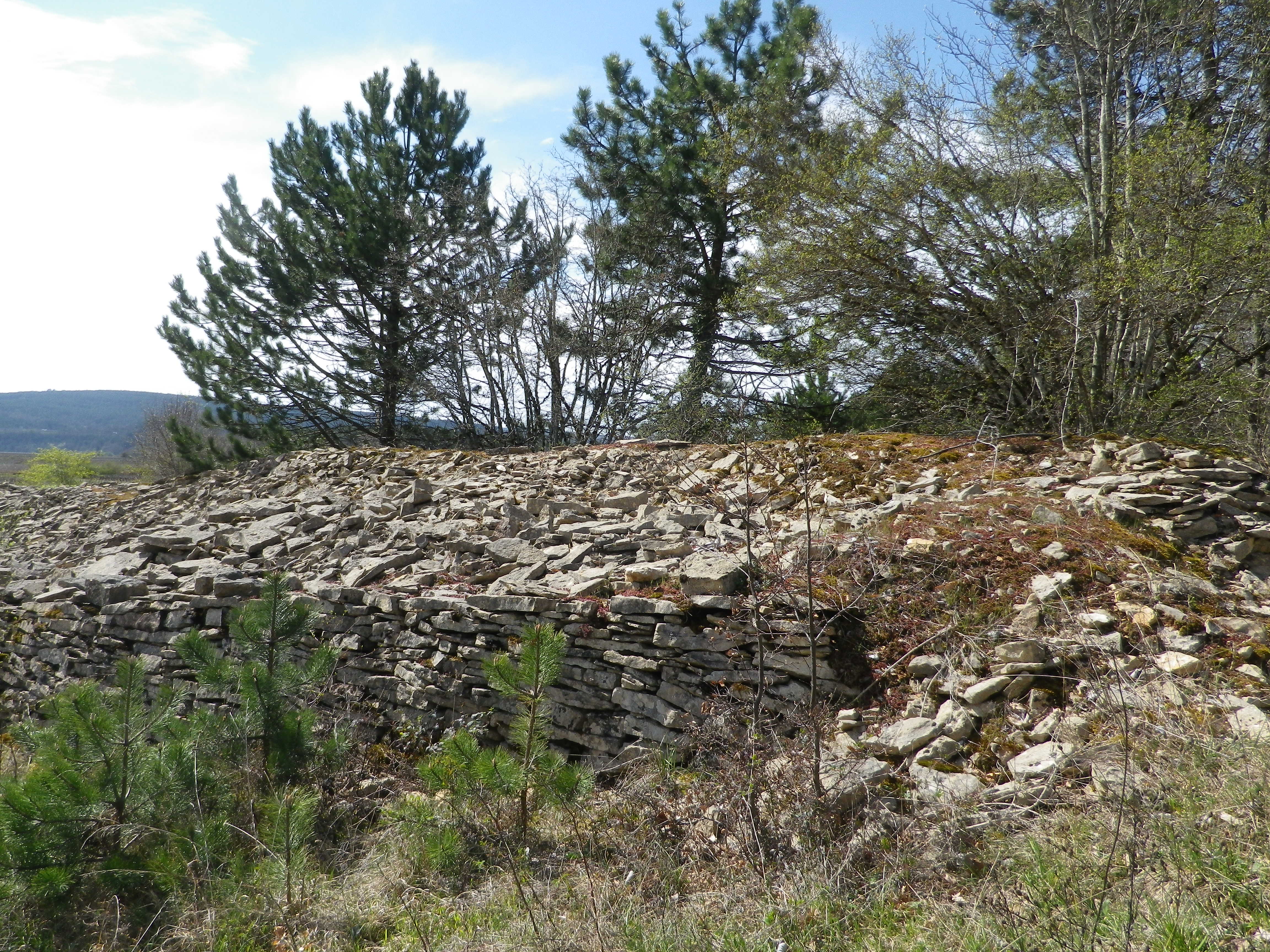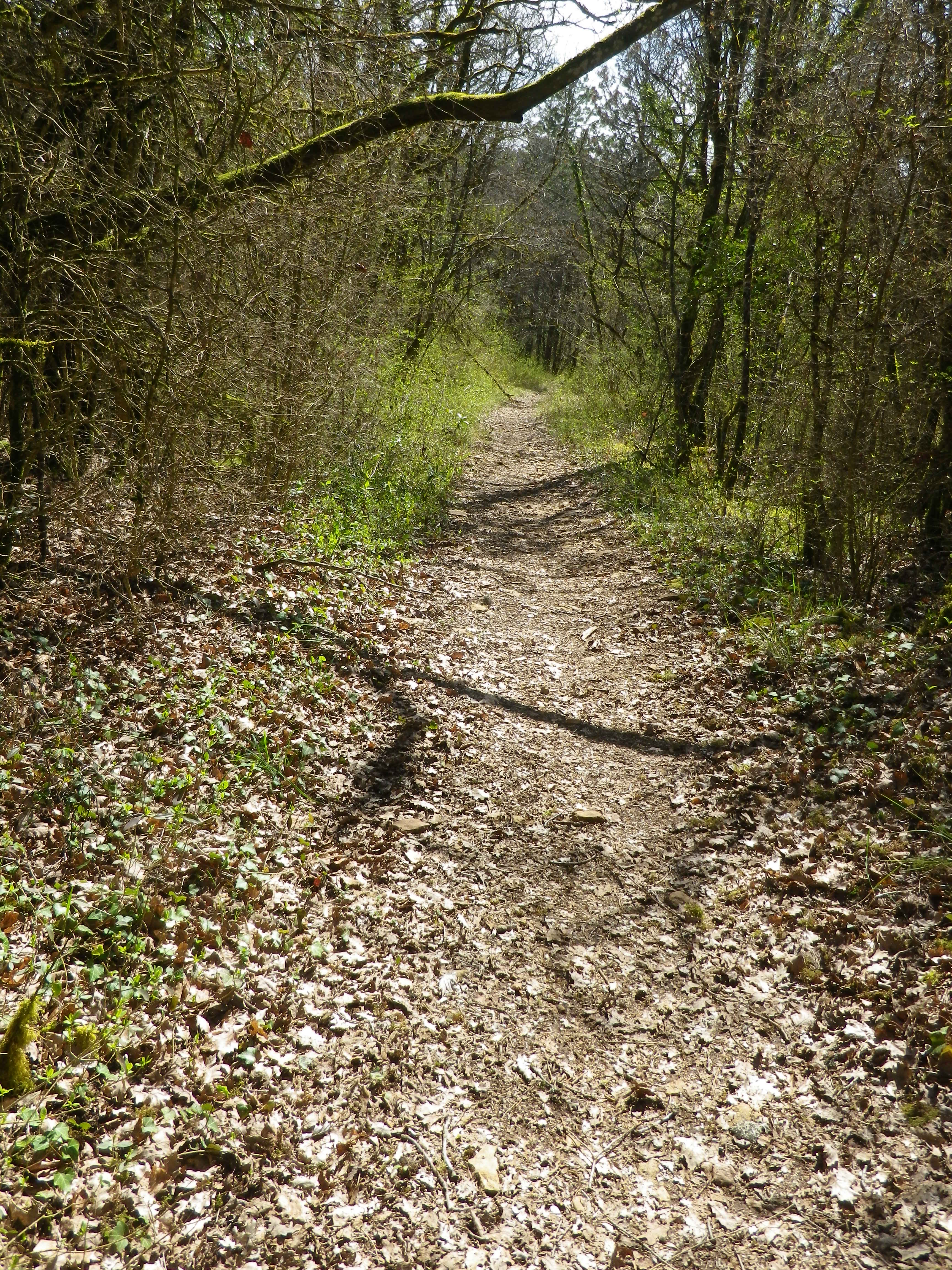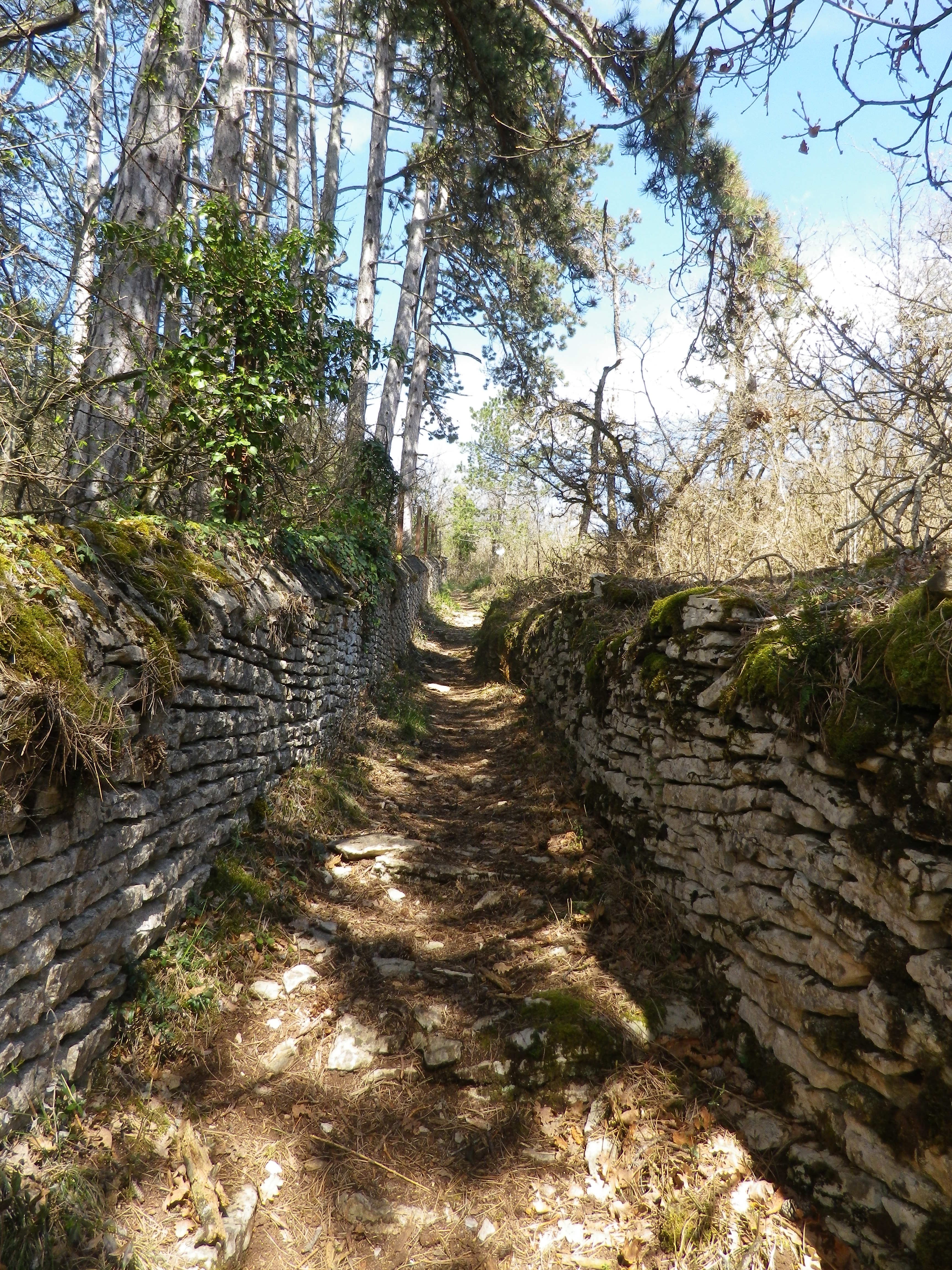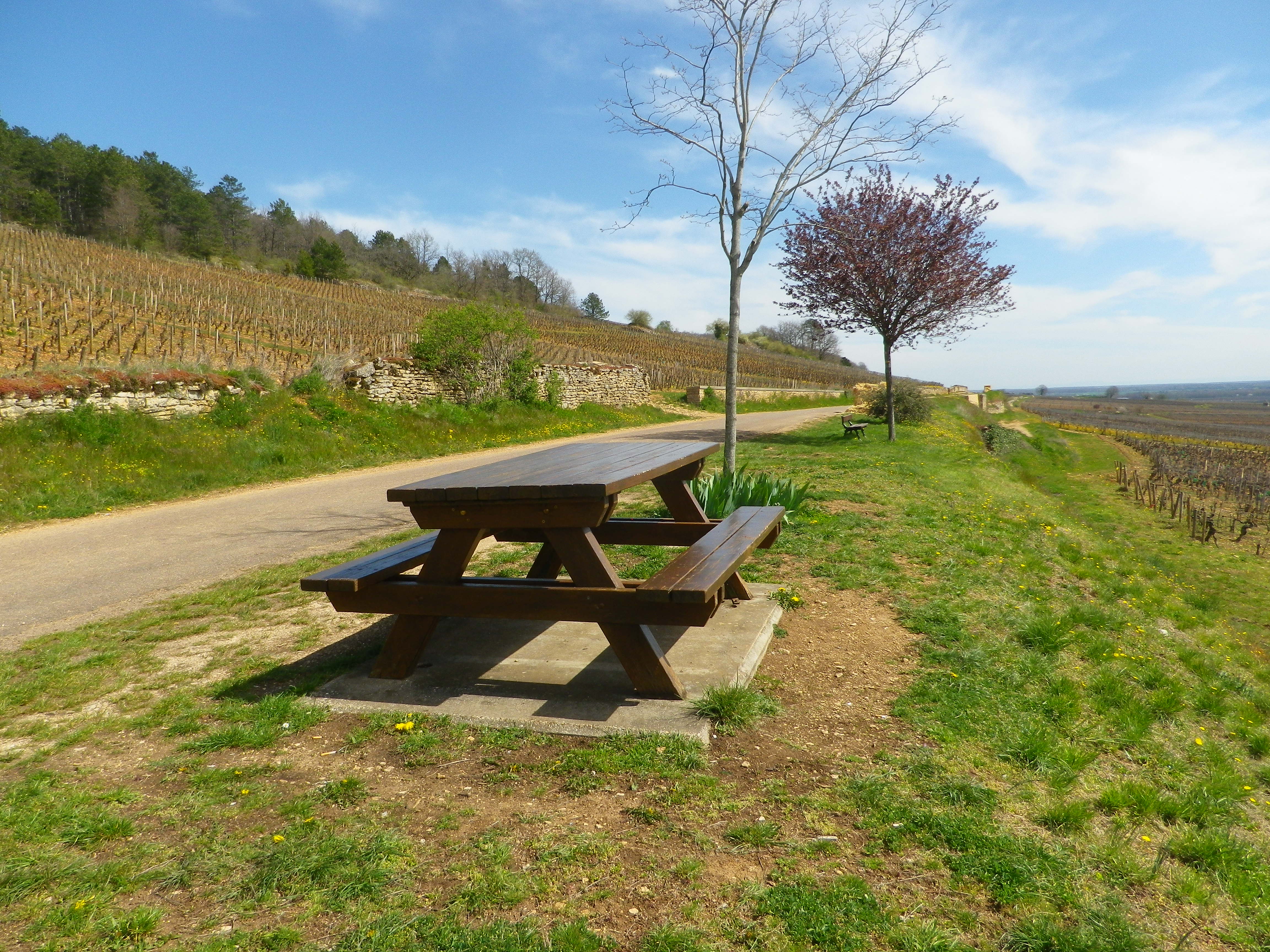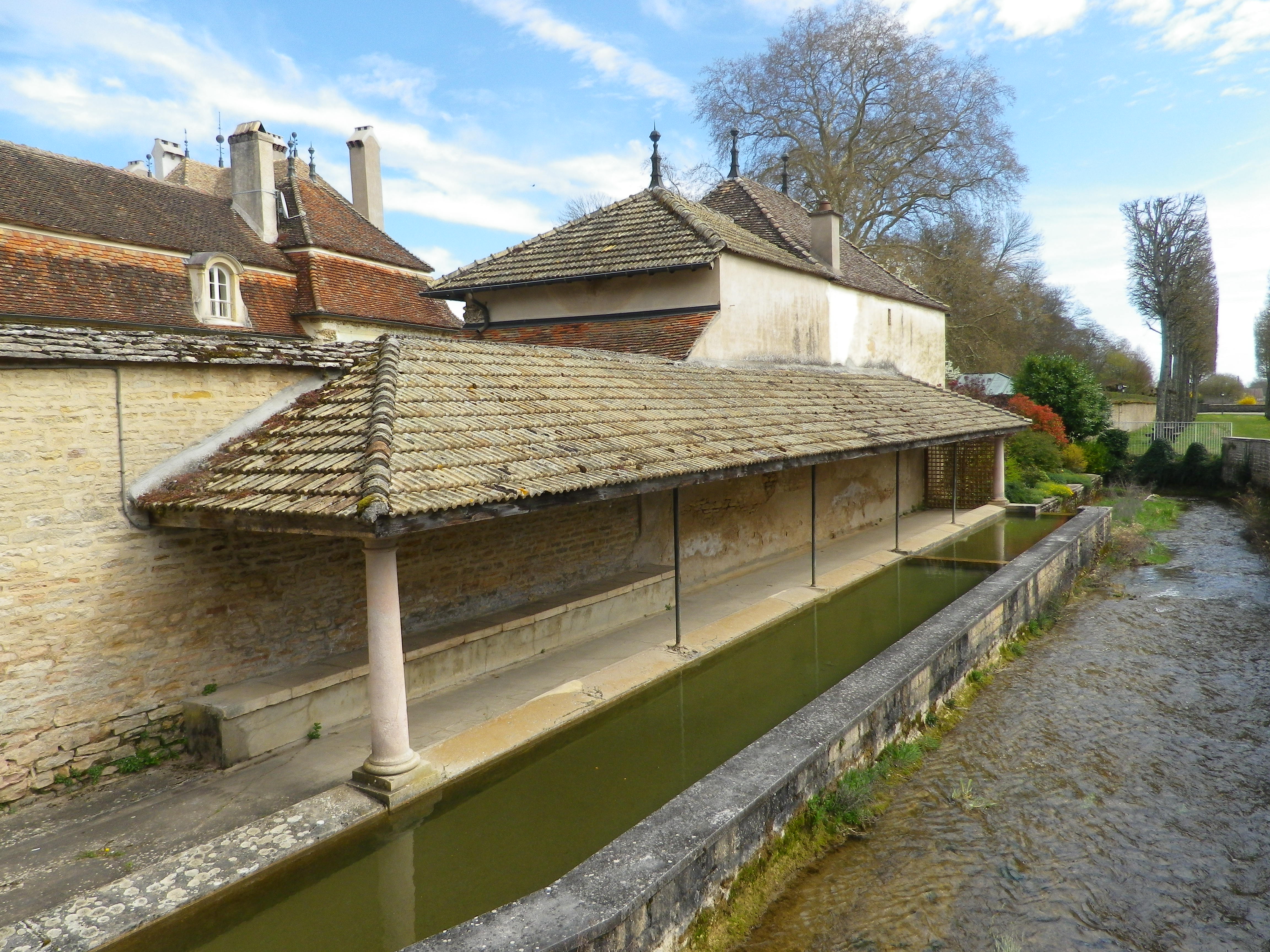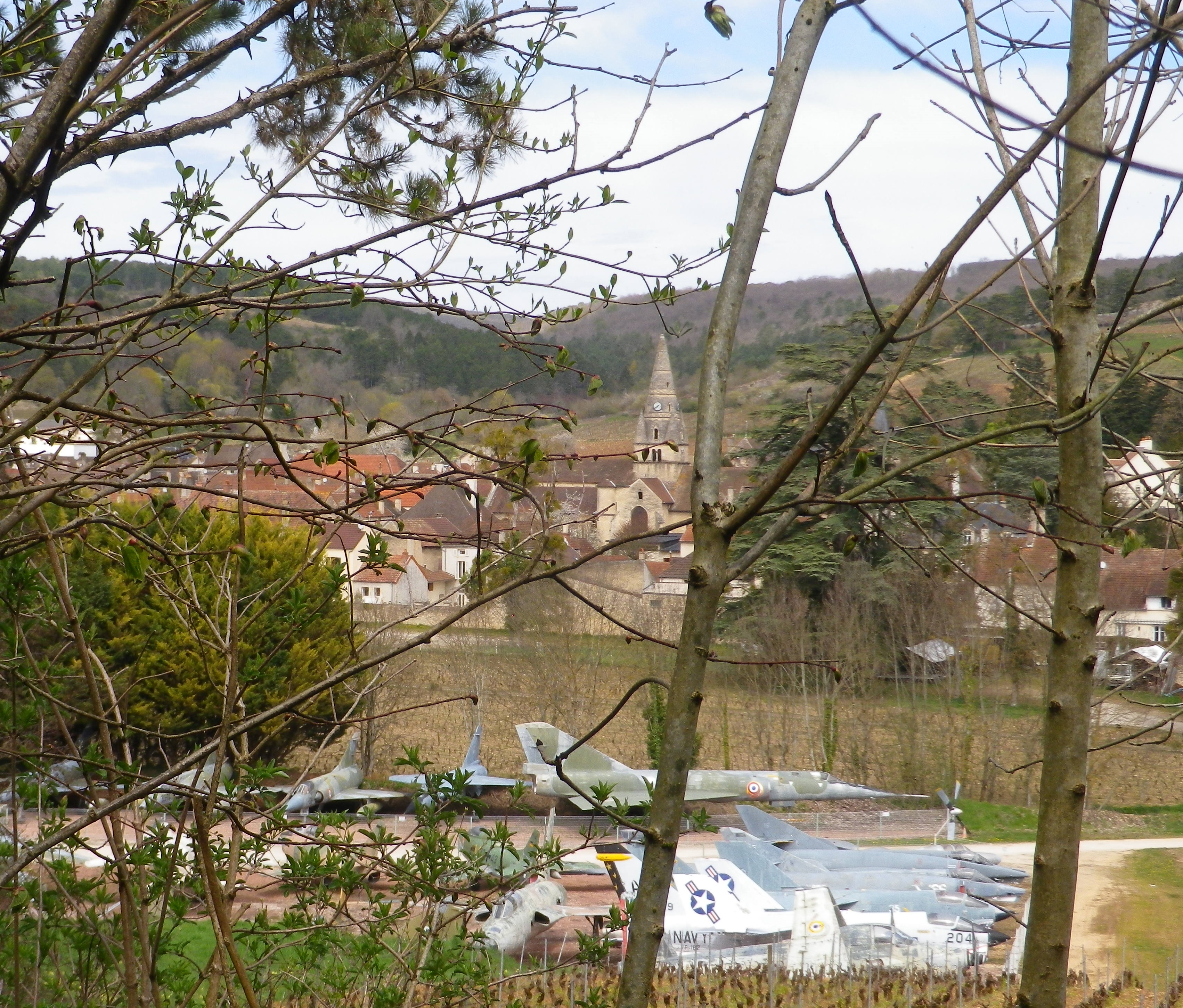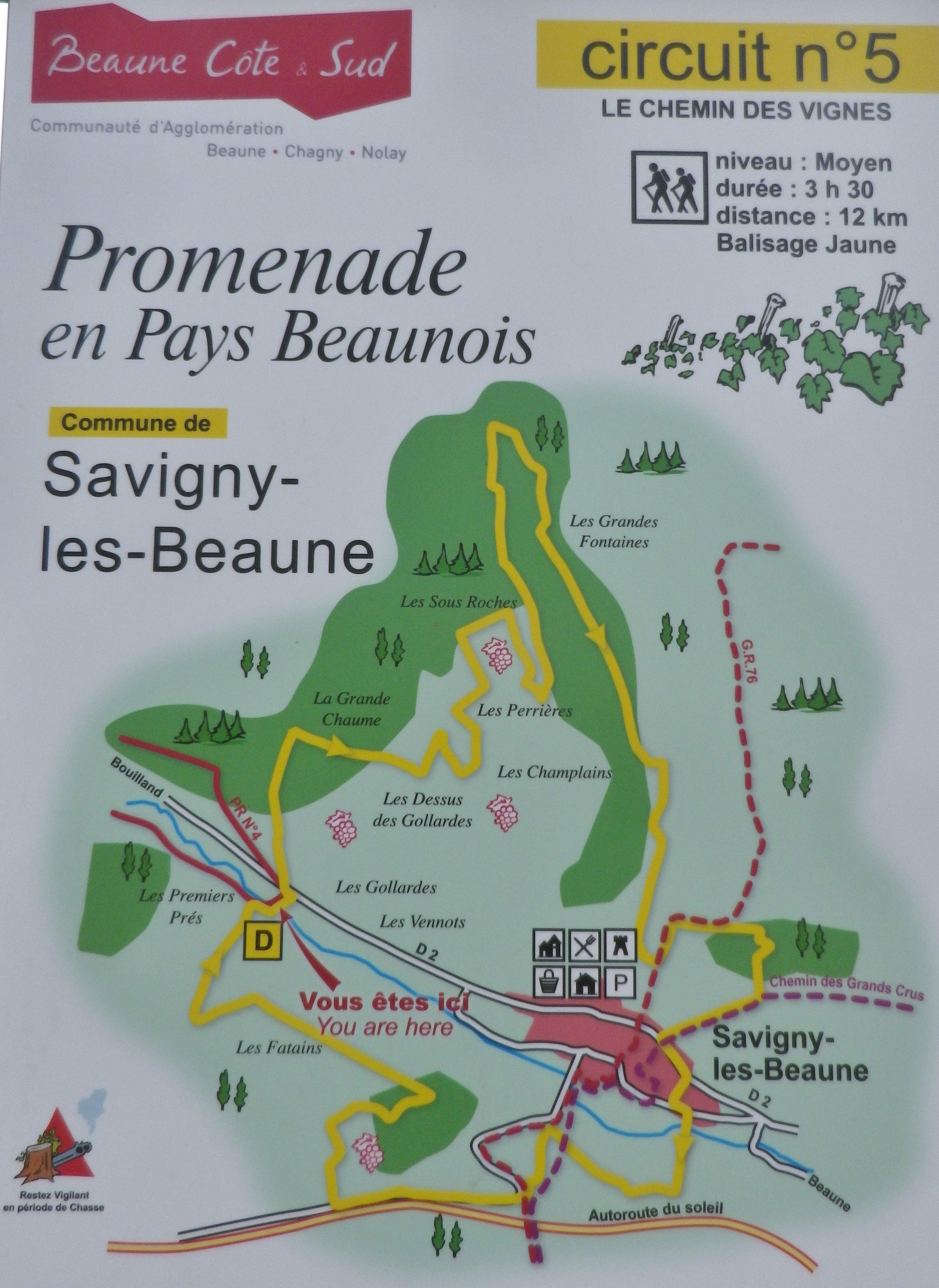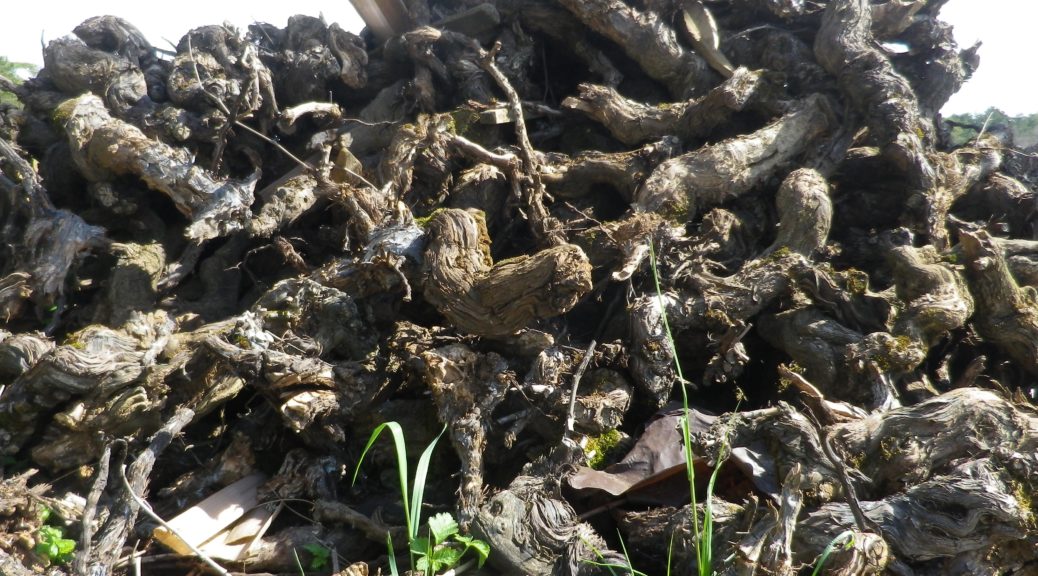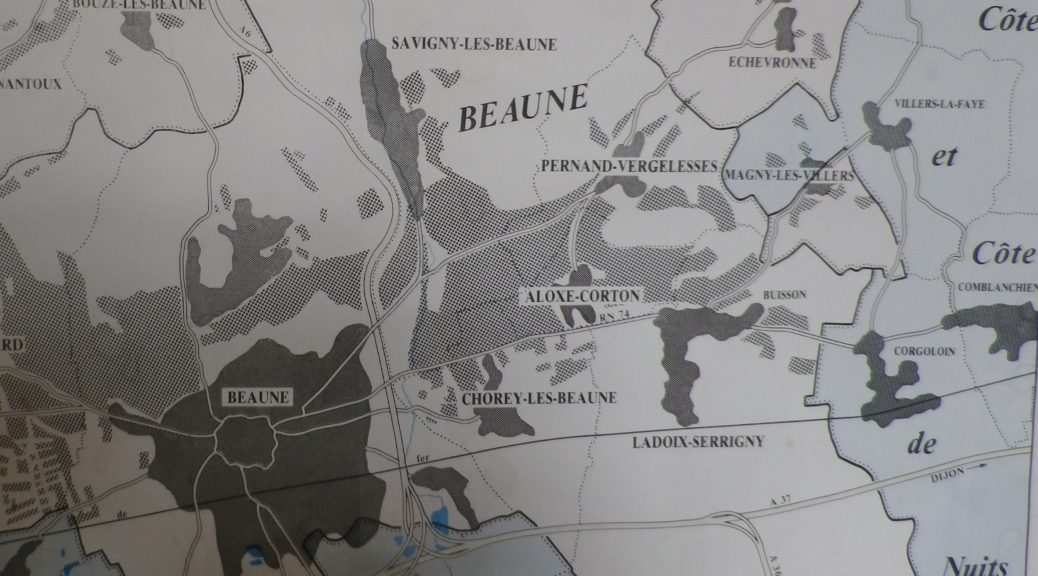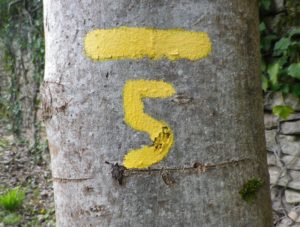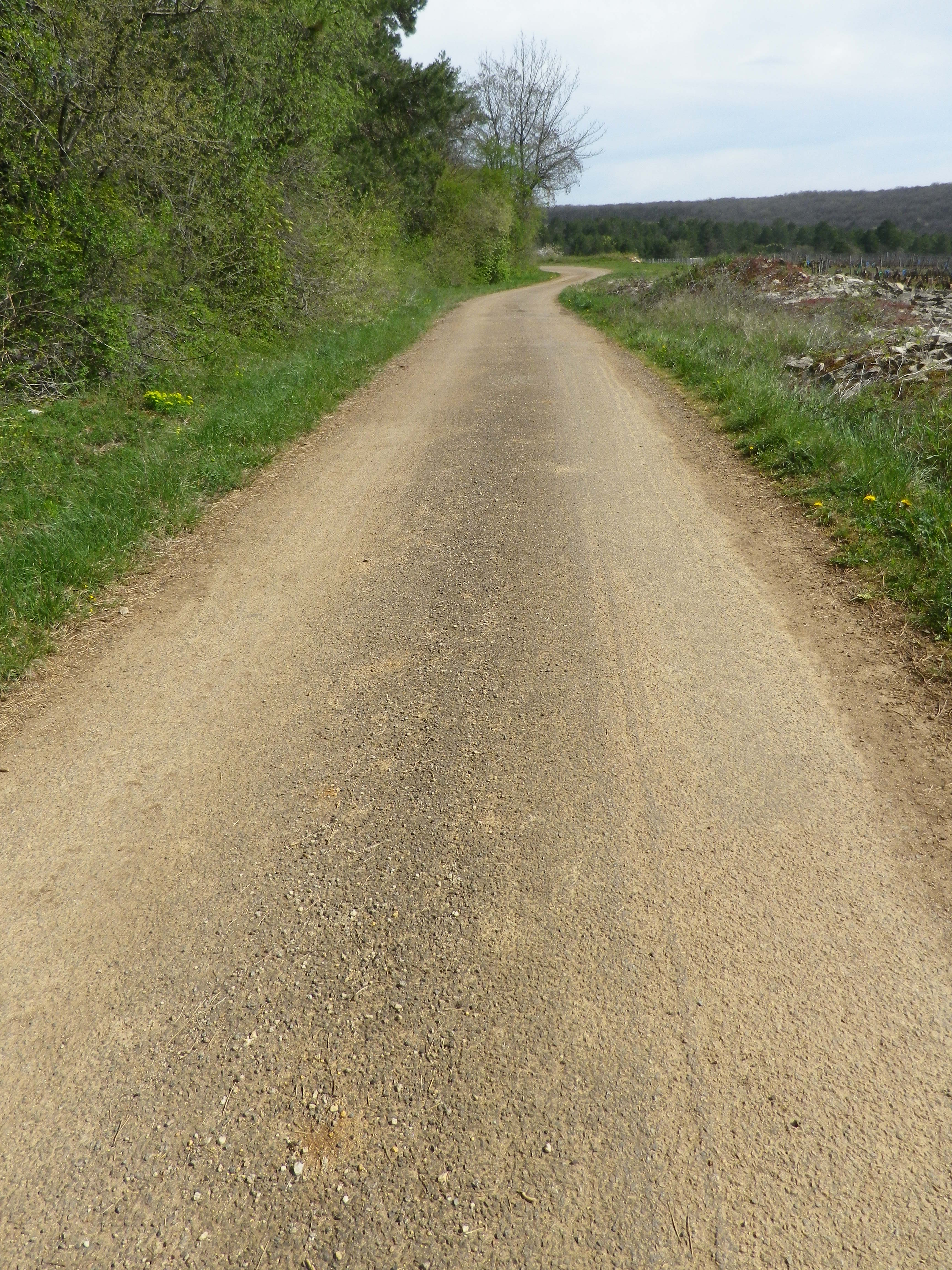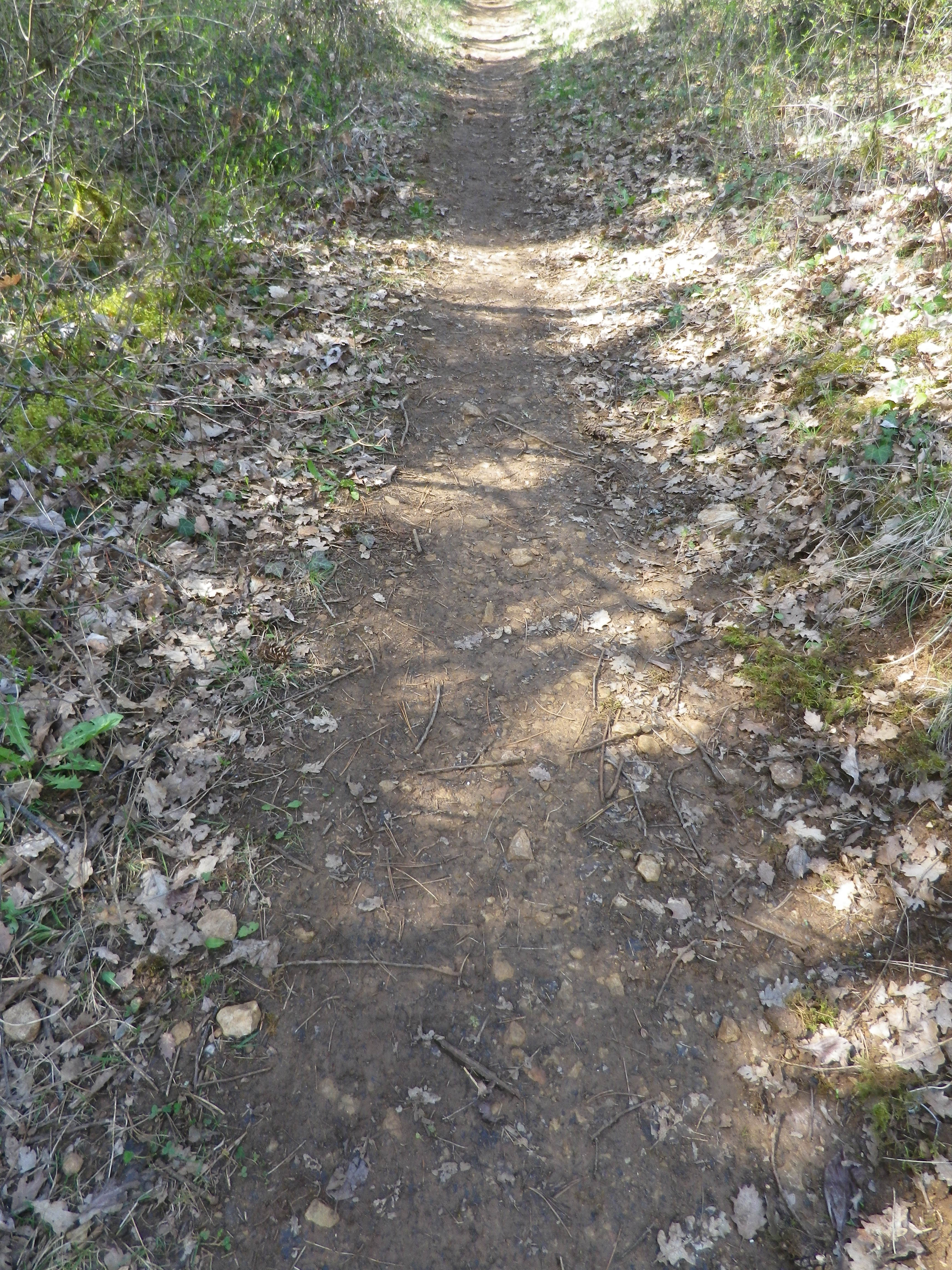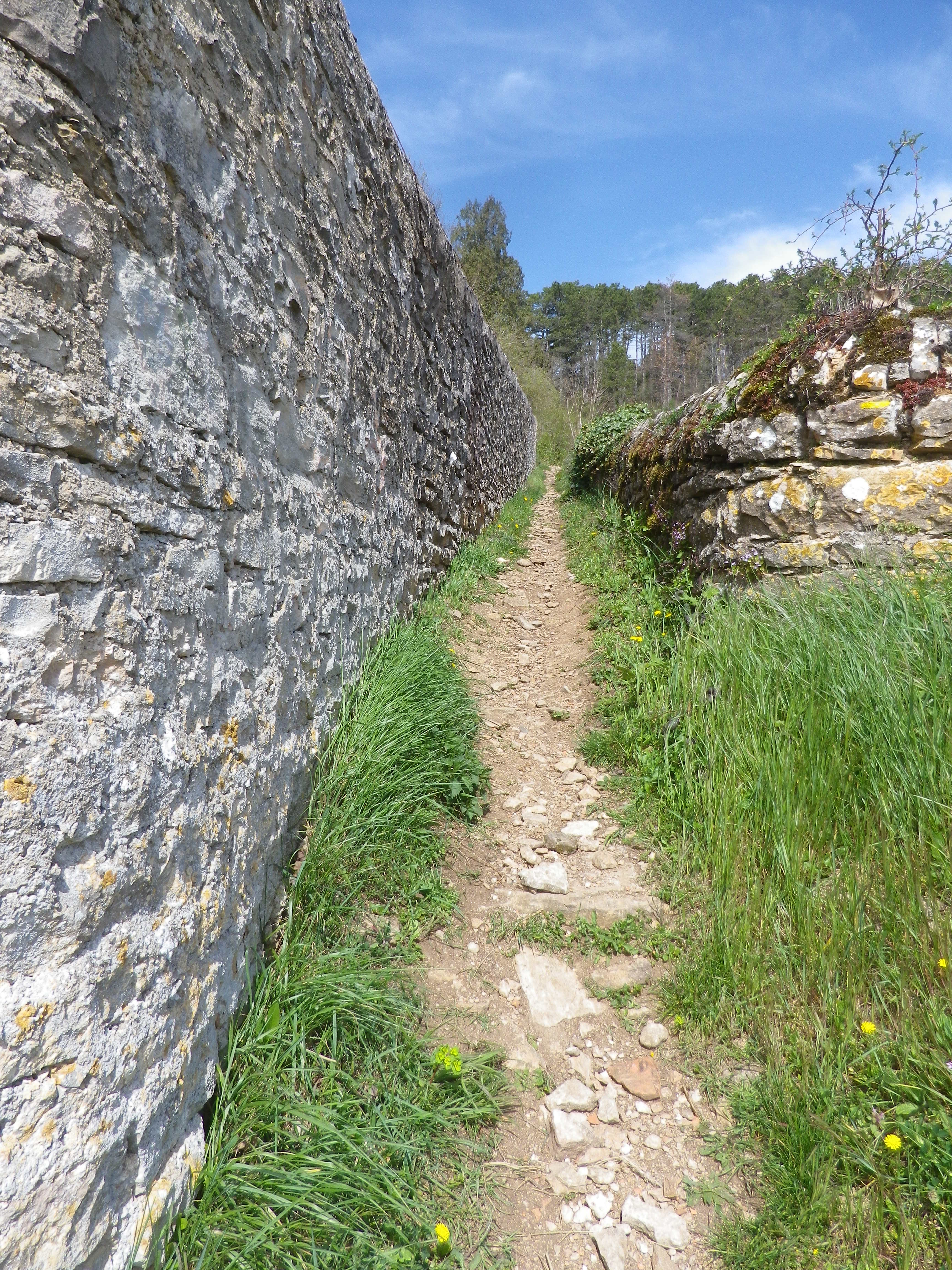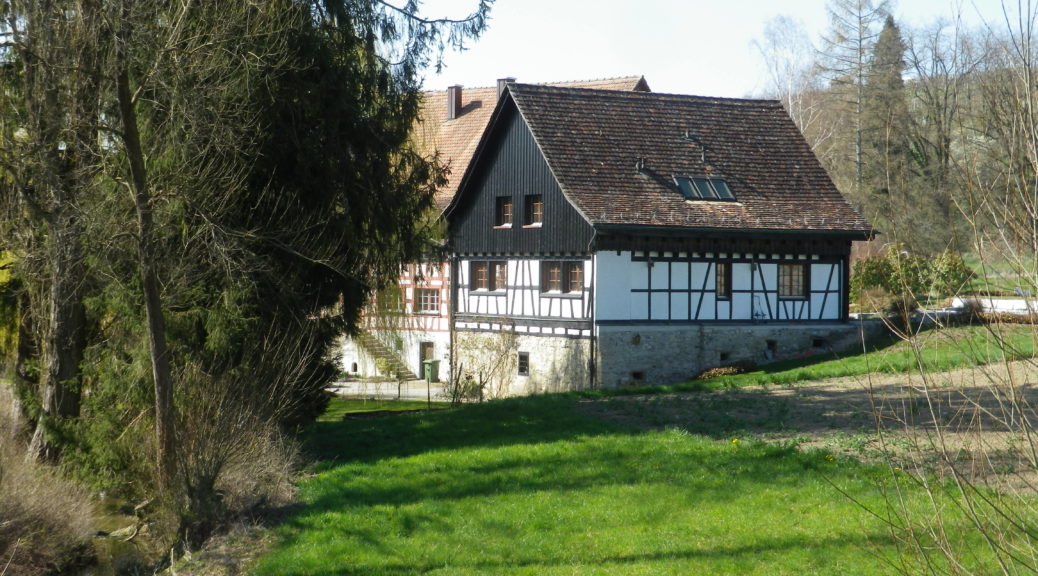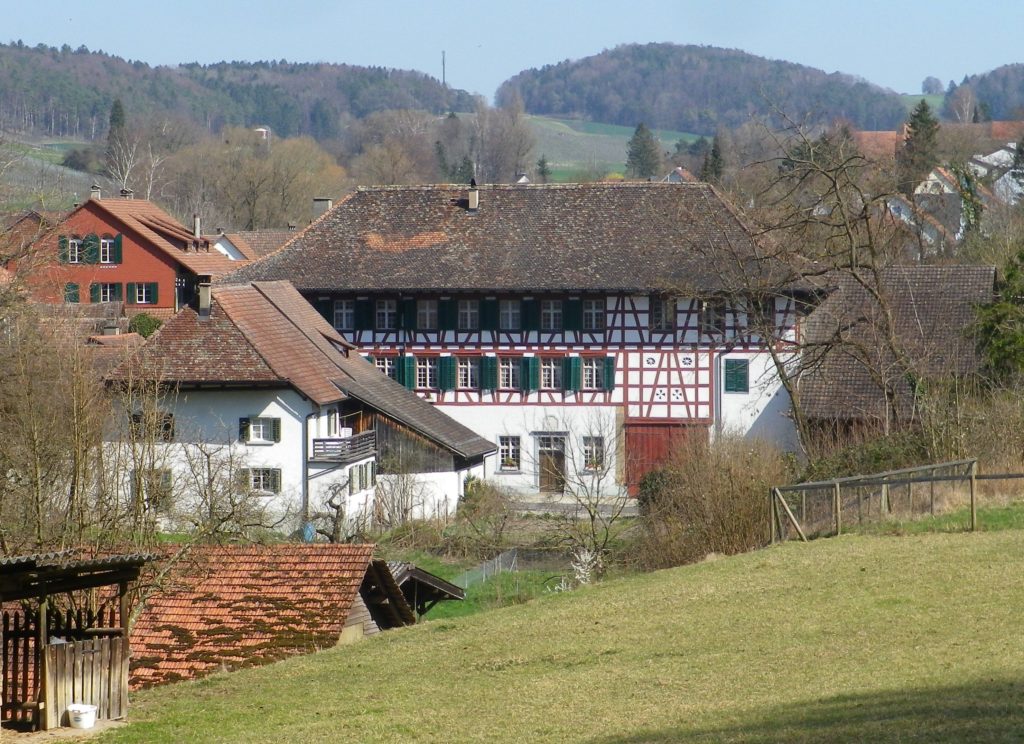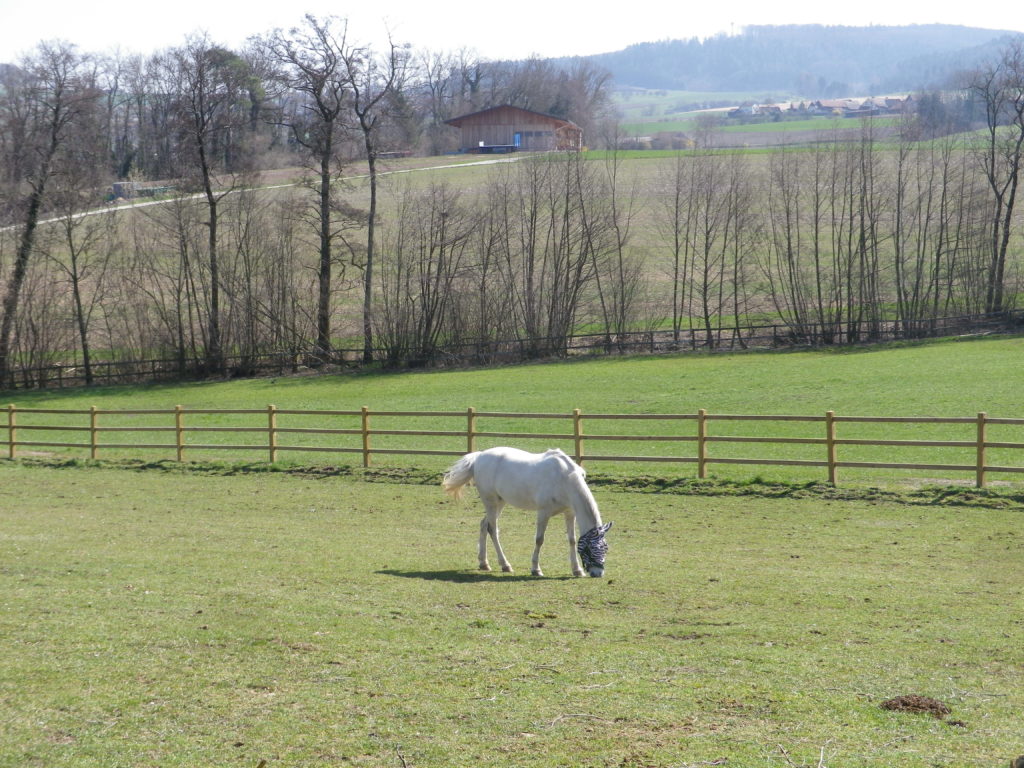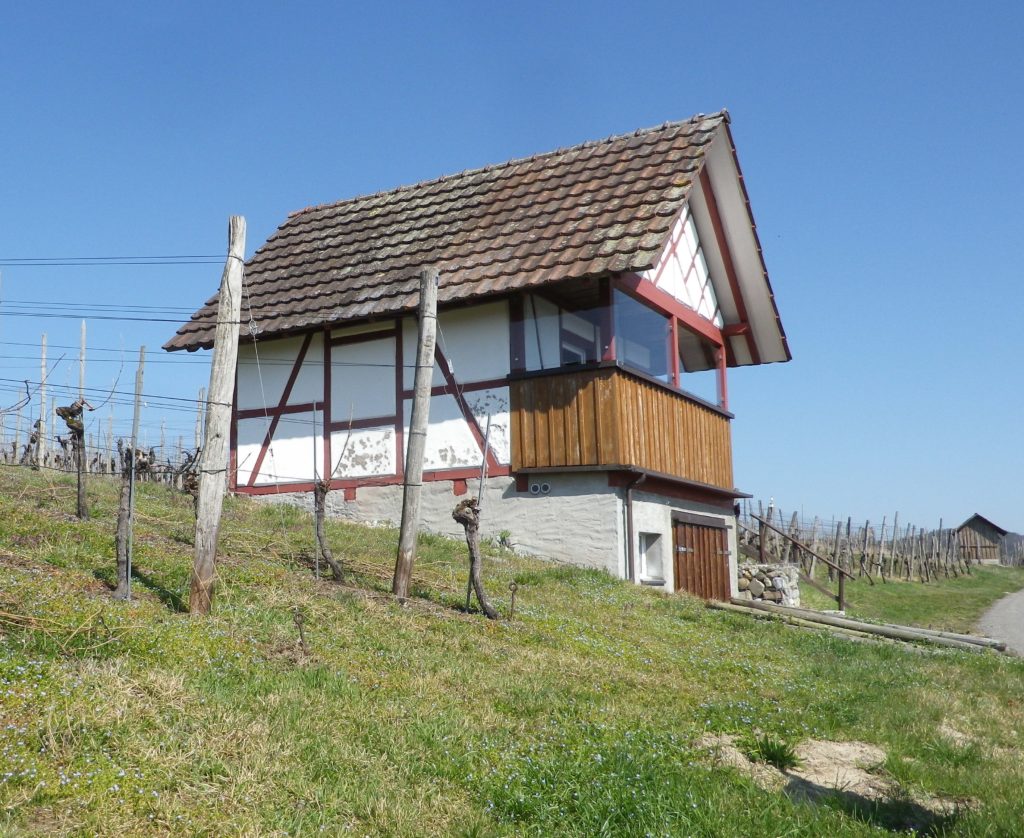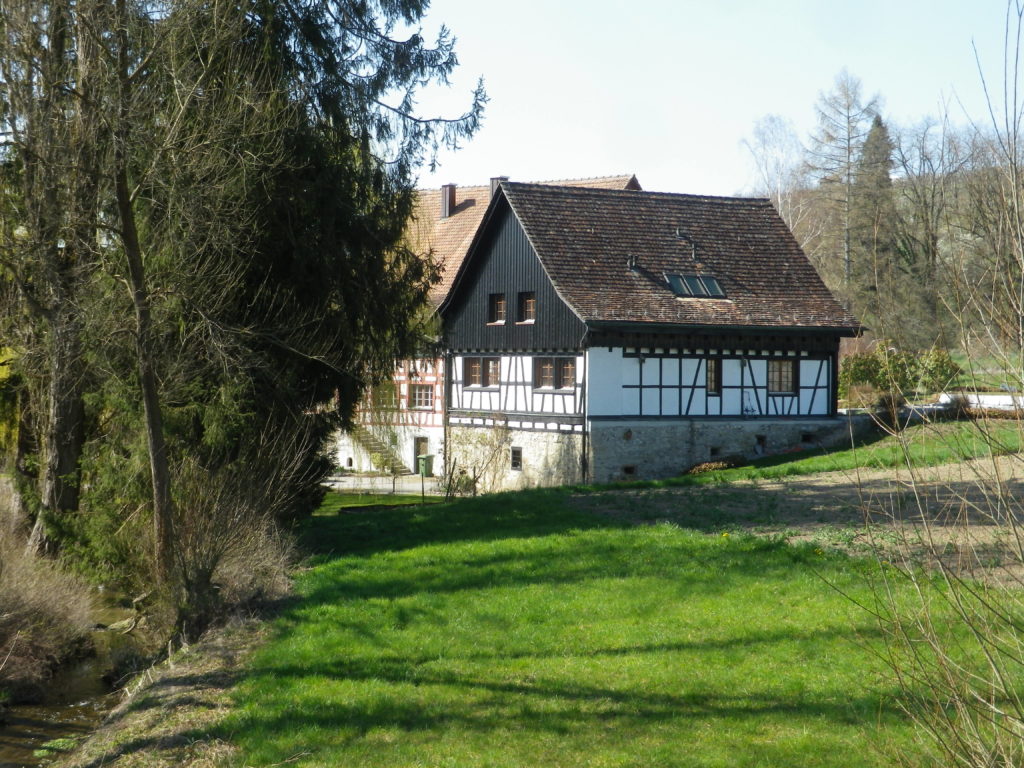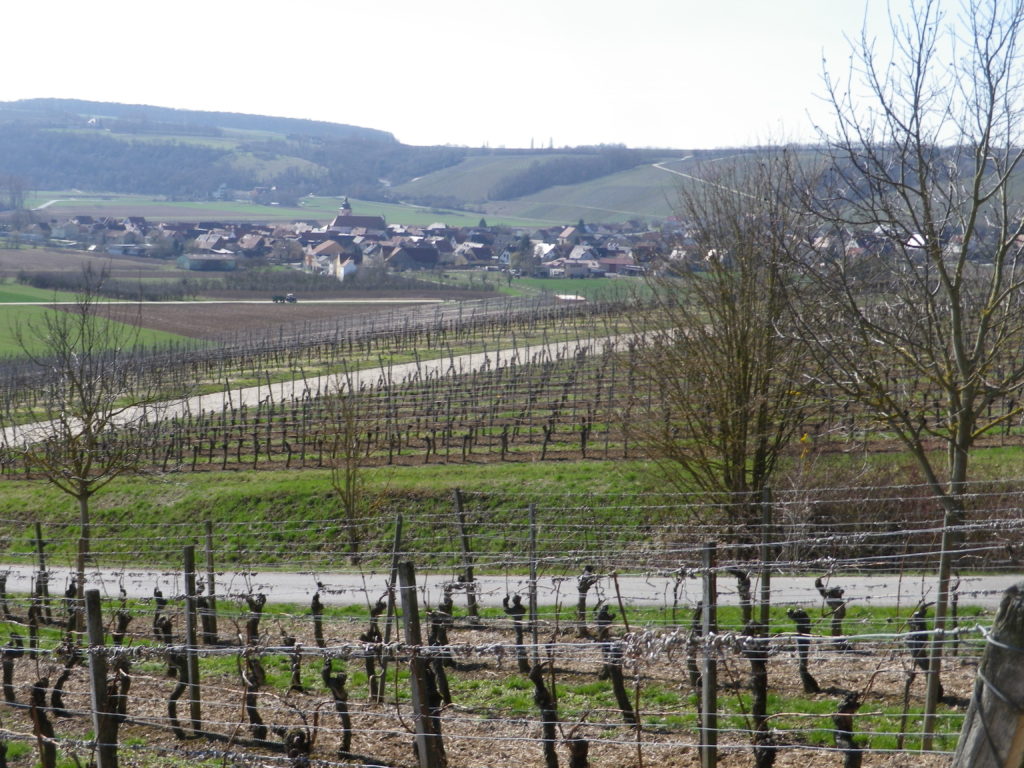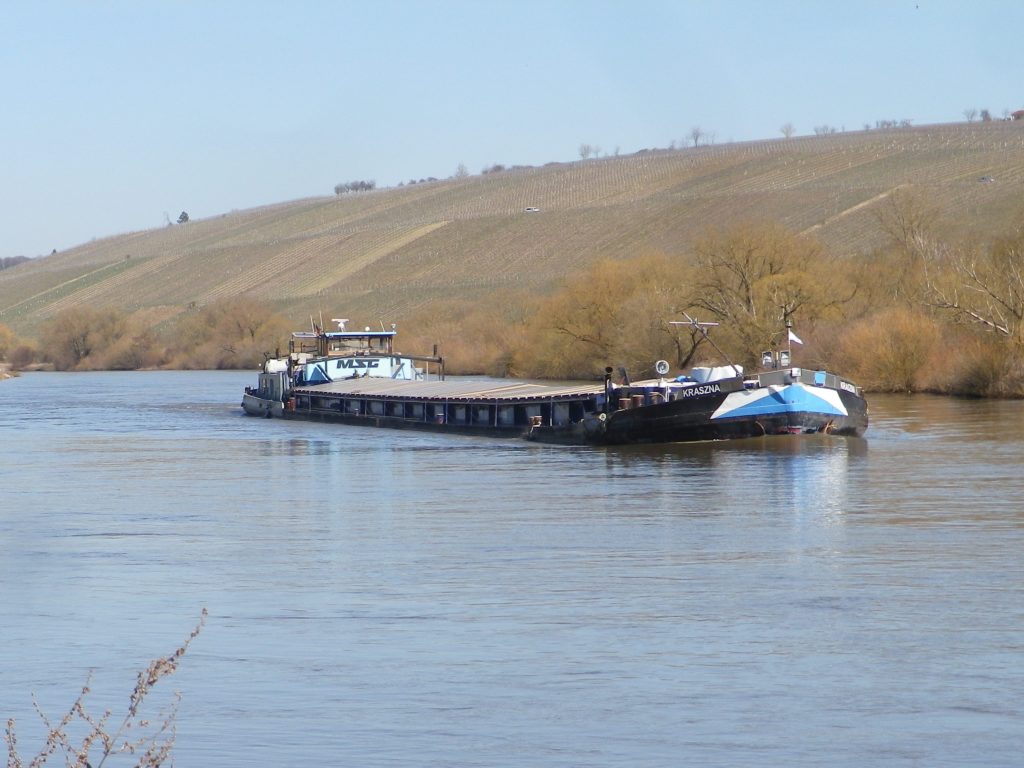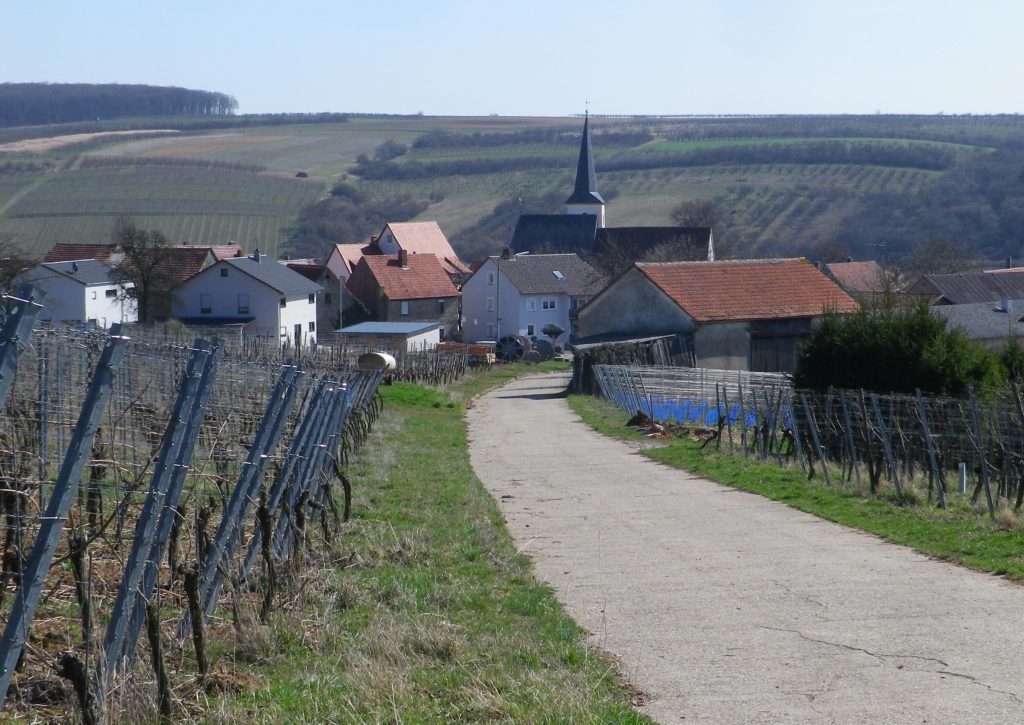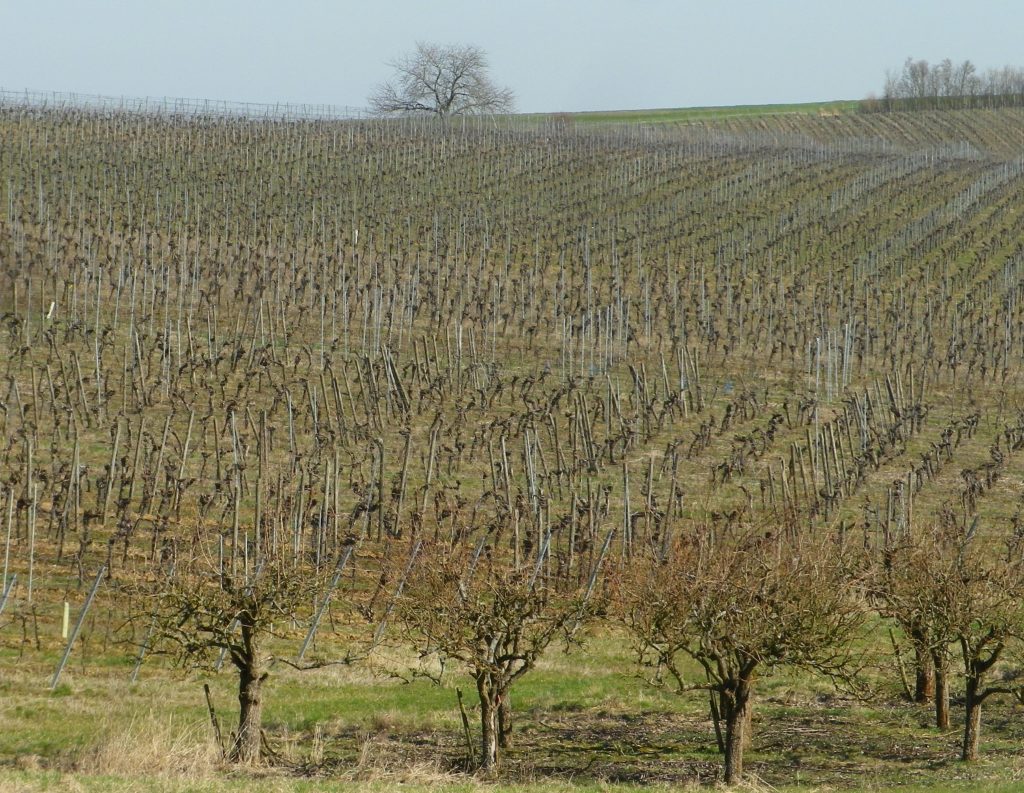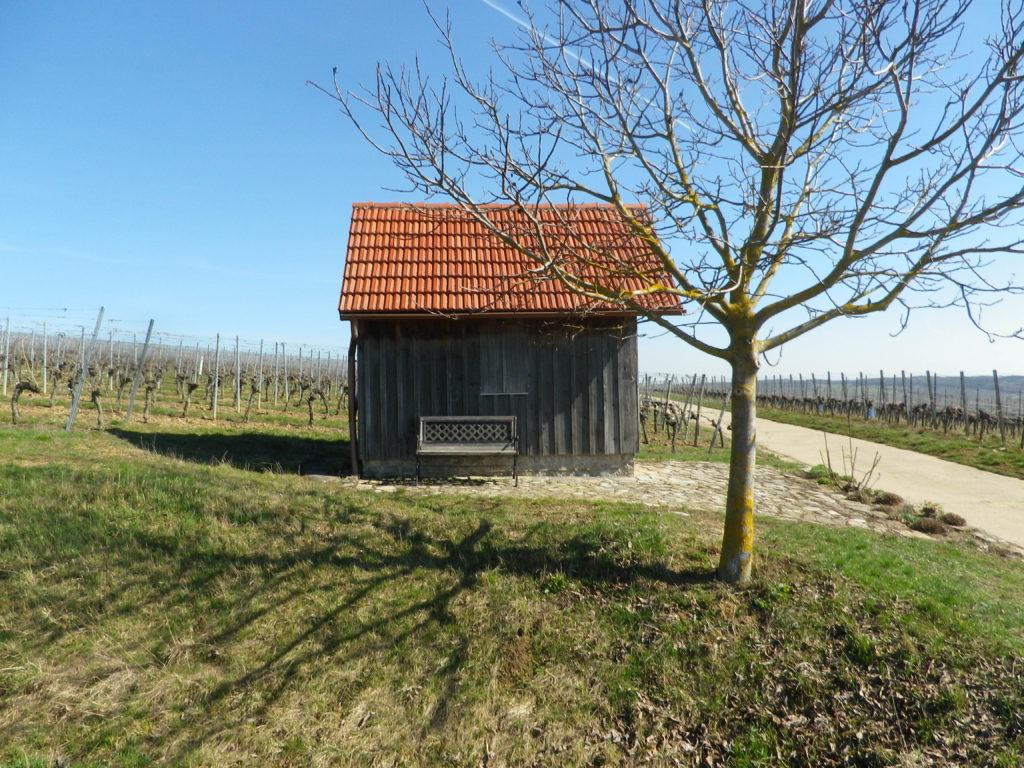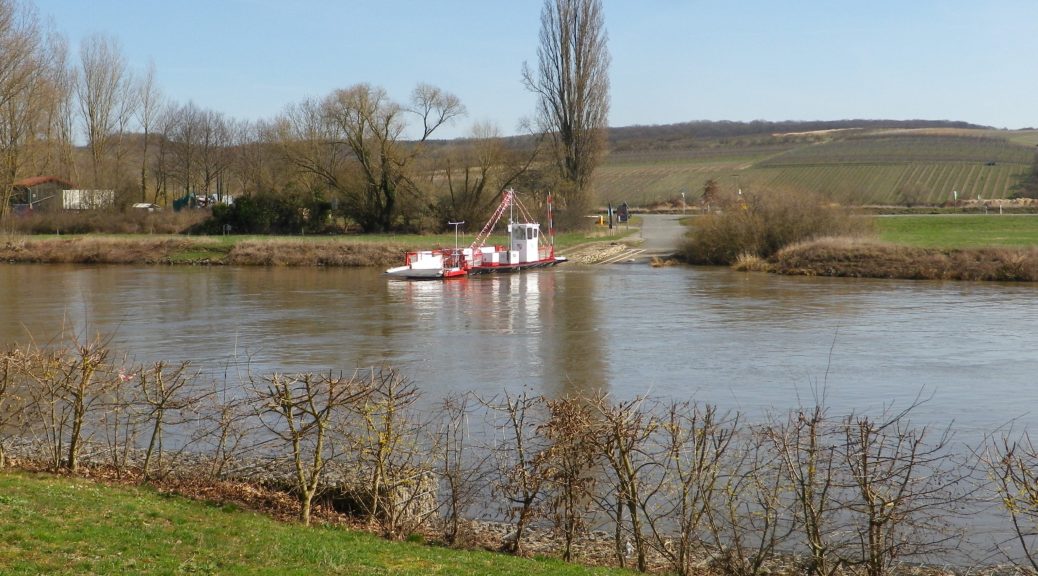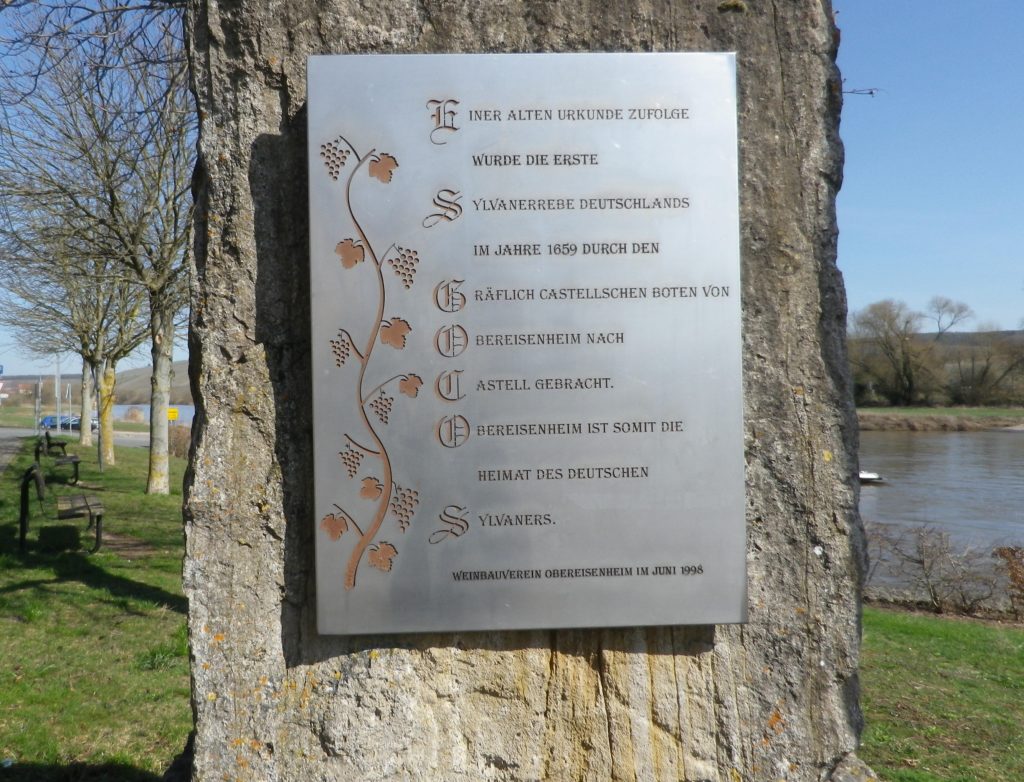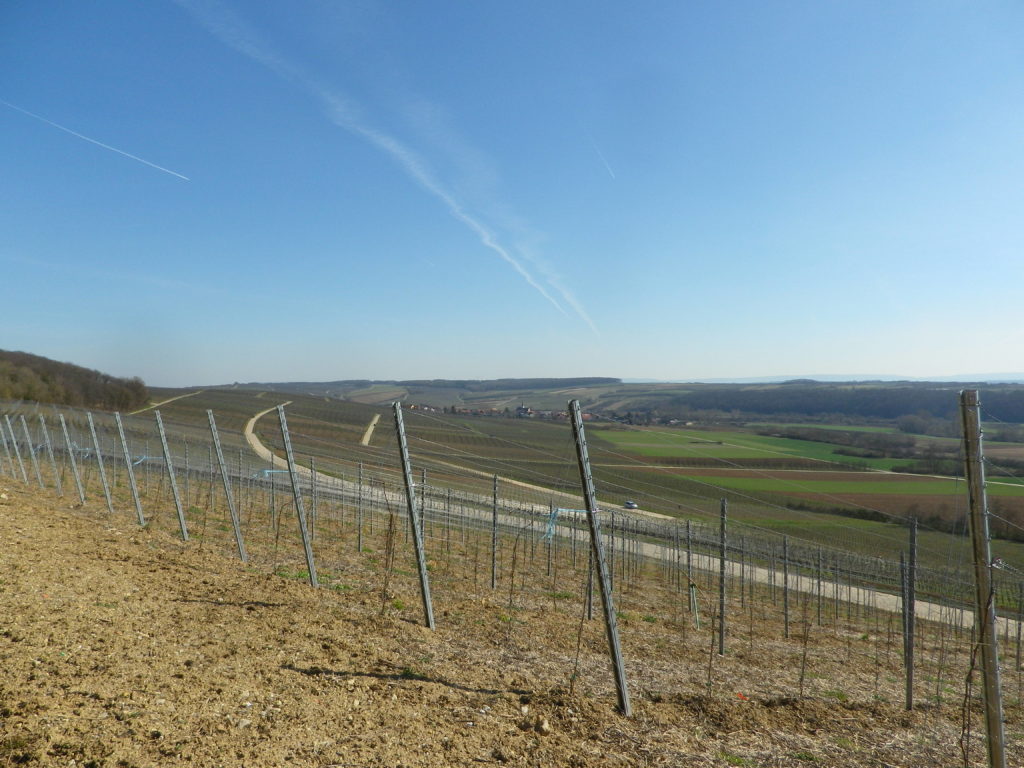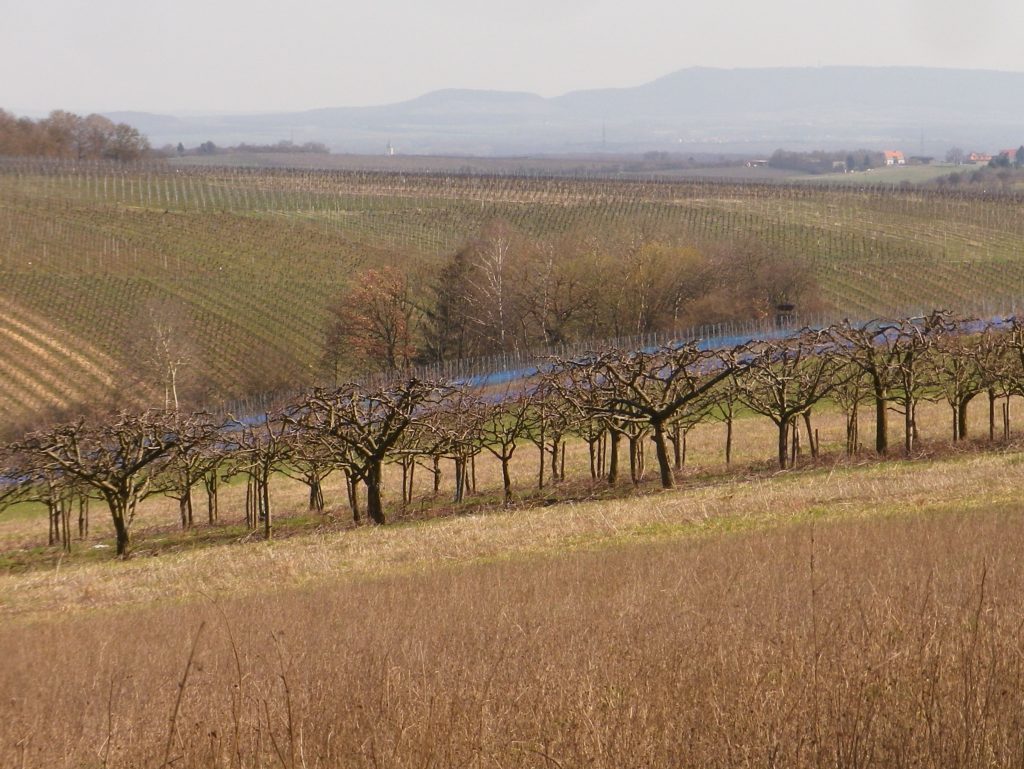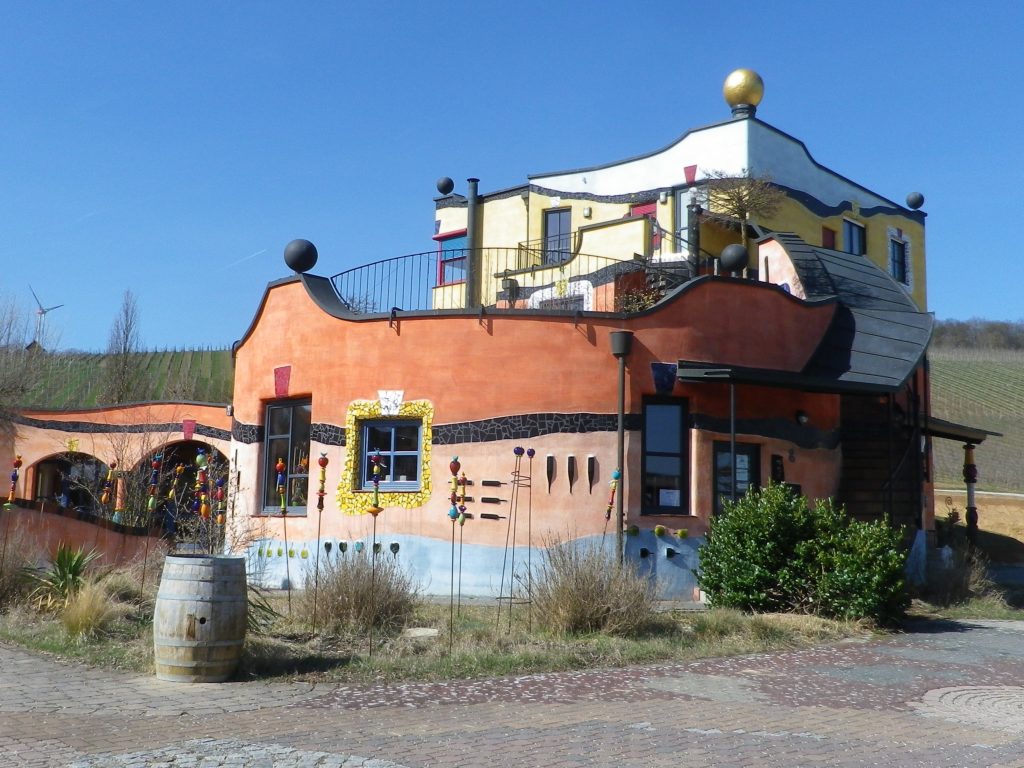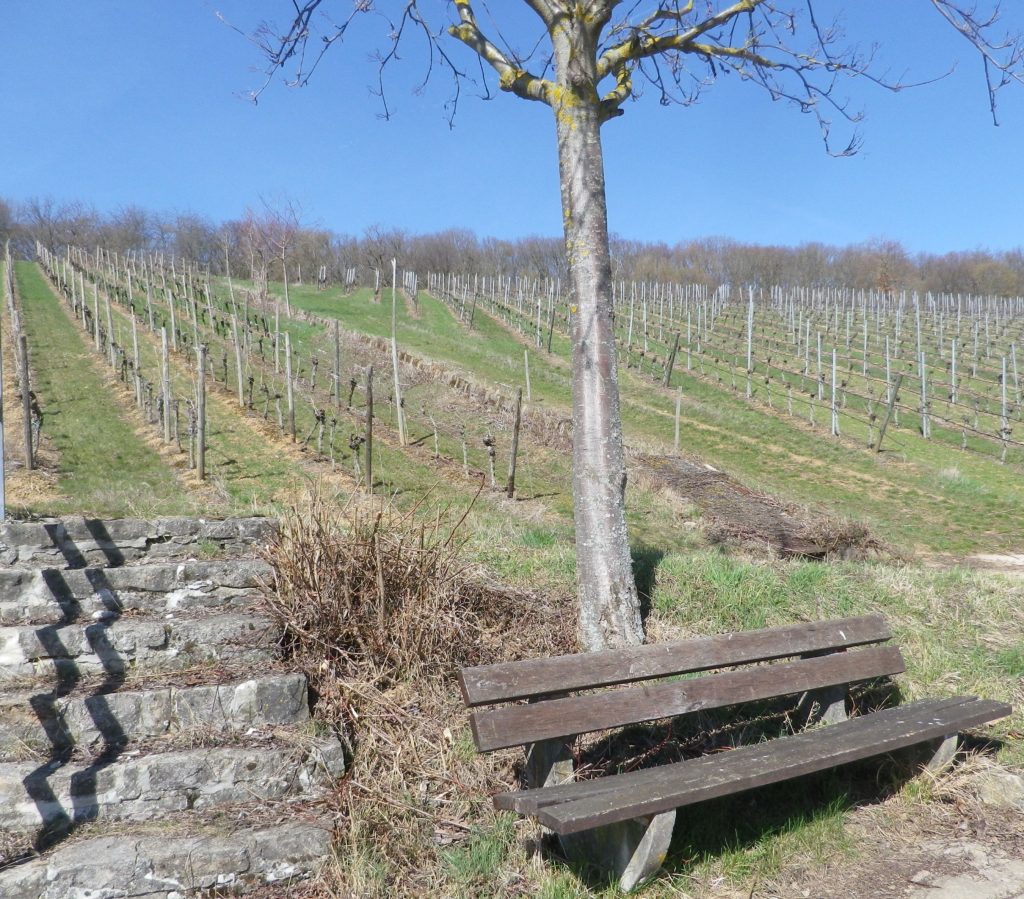Trail Name: Rotweinwanderweg (Red Wine Hiking Trail)
Trail Type: Long distance; surface footing is all hard, be it on tarmac or hardpacked earth to stair-steps; very well maintained, and extremely well-marked.
Length:
Total: 35.5 kilometers / 22 miles
My segment: Altenahr to Marienthal (@15 kilometers / 9 miles)
Convenient to: Bonn, Germany
Marking: Red grapes on a white background
Trail Description:
This outstanding trail had a lot of variety – from the scenery, to the trail surfaces, with just enough challenge to make it fun. Sun and shade alternated as the trail passed from woods to vineyard. Judging from the numbers of couples and small groups, it is a popular trail, easily accessible from a number of points throughout its length, and one that offered several great wine taverns, as well as occasional rest areas with picnic tables, along the way.
Trailheads:
Altenahr: Seilbahnstrasse x B267
Bad Bodendorf : Bahnhofstrasse x Moselstrasse
Parking: (Altenahr to Heppingen only)
Altenahr: Seilbahnstrasse, a large lot
Rech: Brueckenstrasse (at the far end of the bridge)
Marienthal: Klosterstr, large lot at end of the improved road
Heppingen: Left off Burgstr, Parkplatz Friedhof, a large lot by the cemetery
Public Transportation Options:
Rail: Deutsche Bahn regional trains frequently service the Ahr valley, from Remagen to Ahrbruecke, with stops at all the villages/towns on the trail. (See the free ride tip below.)
Suggested Stages:
Altenahr to Mayschoss (4 km)
Mayschoss to Rech (3 km)
Rech to Dernau (4 km)
Dernau to Marienthal (4 km)
Marienthal to Walporzheim (3.1 km)
Walporzheim to Ahrweiler (3.4 km)
Ahrweiler to Bad Neuenahr (6.7 km)
Bad Neuenahr to Heppingen (2.2 km)
Heppingen to Lohrsdorf (2.5 km)
Lohrsdorf to Bad Bodendorf (2.1 km)
Trail Itinerary-Reference Points: (Altenahr to Bad Neuenahr only)
Altenahr: Altenburgerstr, Rossberg, trail for castle, then for Weisses Kreuz, vineyards, woods, more vineyards; Mayschoss: Weinhaus Michaelishof, Dorfstr, trail through vineyards, Rech: joins above In Der Aue; vineyards, then woods; Dernau: vineyards, cross K35, cross Bachstr, vineyards; Marienthal: Klosterstr; past the Kloster Marienthal winery, then ruins; Vineyards and woods, past Weingut Forsterhof; Bad Neuenahr-Ahrweiler: Im Teufelbach-Am Silberberg, vineyards, cross Elligstrasse, vineyards; Lantershofen-Grafschaft: cross L83/Hemmessener Str; Bad Neuenahr-Ahrweiler: cross over A573, vineyards; cross top of Bergstr, woods; Cross under A61; Heppingen: Jahnstr, past cemetery, cross Burgstr, woods, then vineyards; Lohrsdorf: Ritterstr, Grosser Weg, B266, vineyards, woods; Bad Bodendorf: Heerweg, turn at Winzerverein Bad Bodendorf onto Bahnhofstr.
Representative Trail Photos:
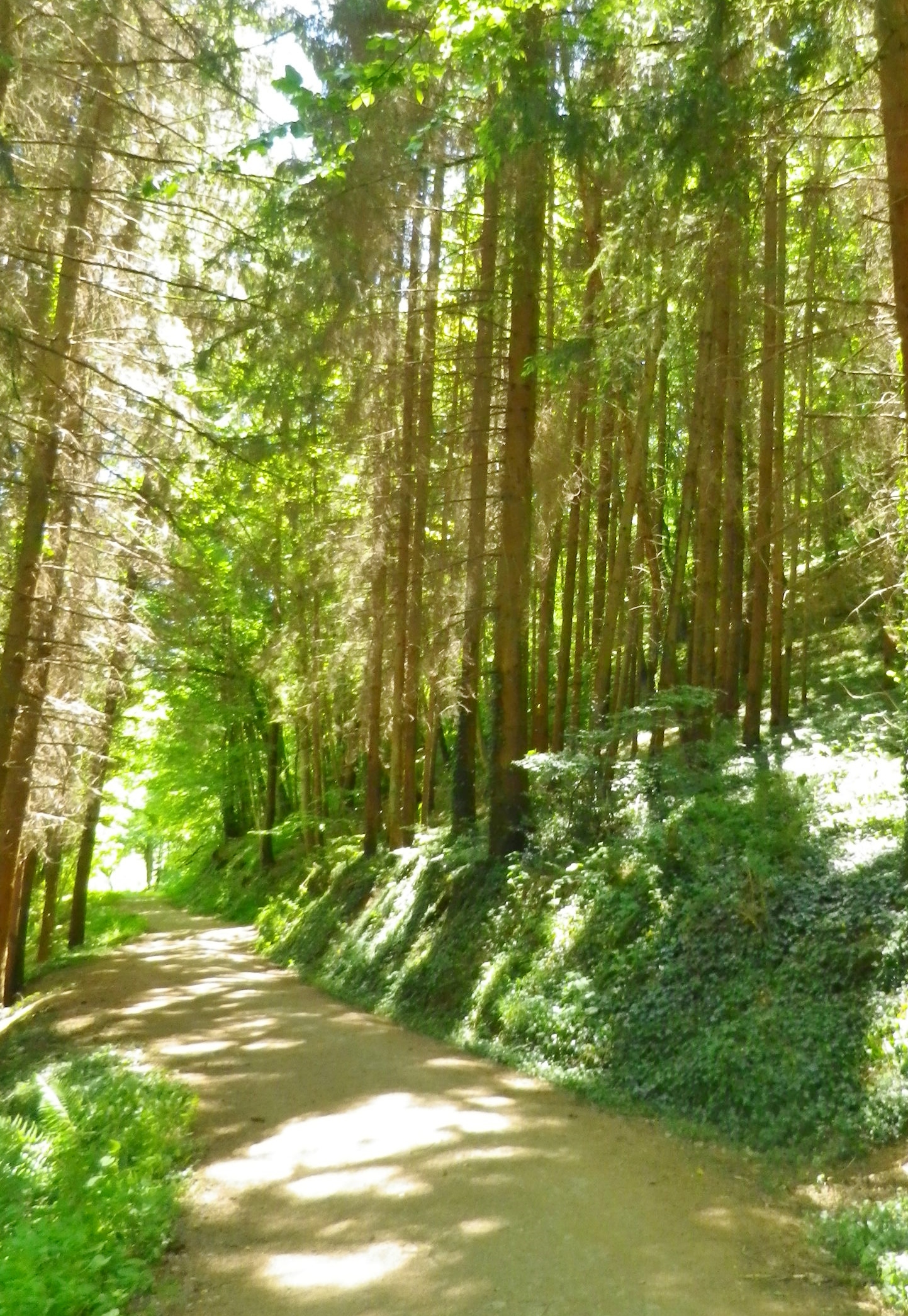
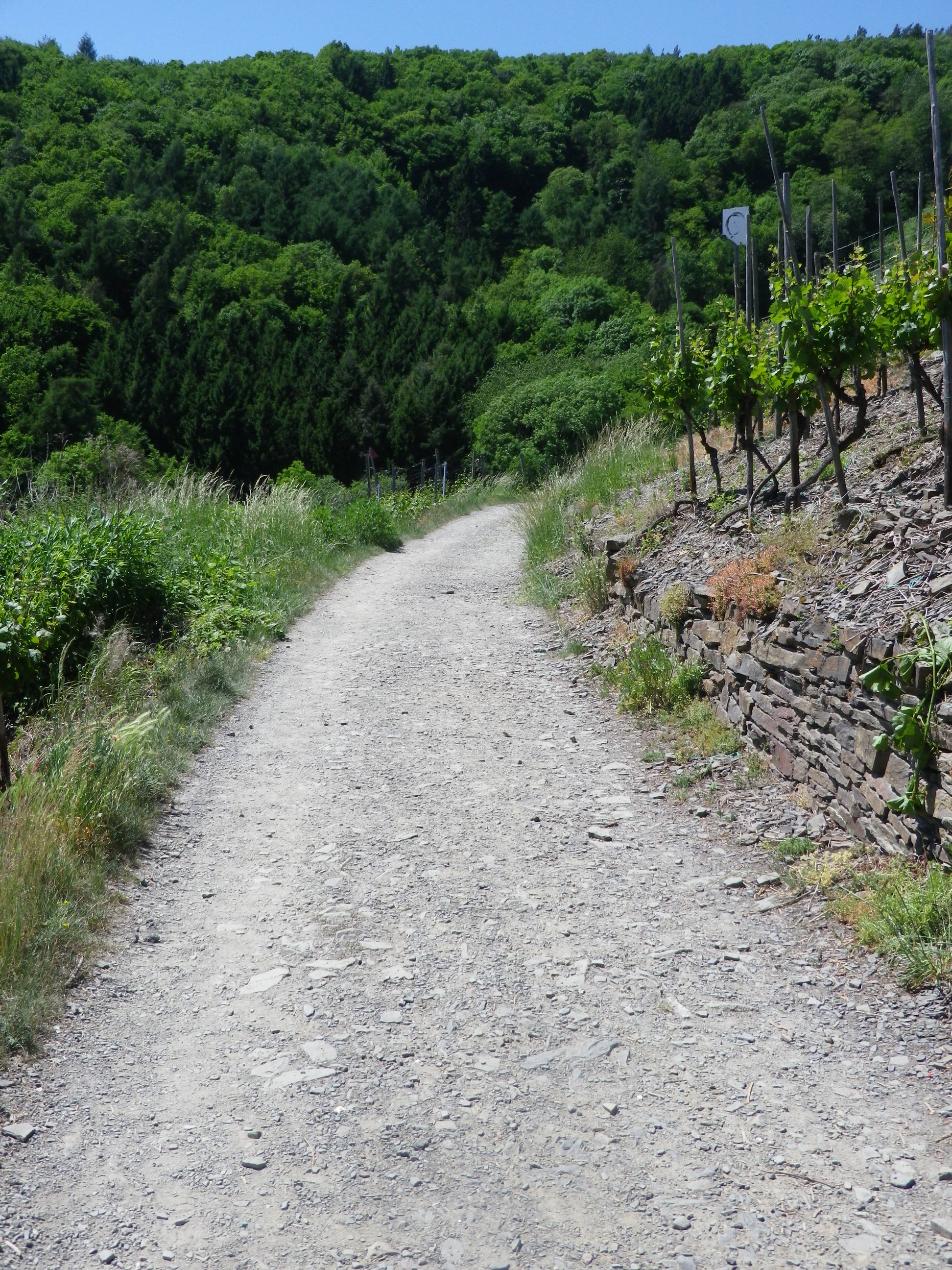
Restrooms: None observed!
Attractions on or near Trail:
Ahrweiler: AhrWeinForum, a museum with permanent displays focusing on the life of vintners in the vineyards and in the cellars.
Tasting along the Trail:
Many taverns, wine bars and wineries (See itinerary above for ones directly on the path). Many more may be found off the trail in town/village centers.
Alternative Options:
Biking: The 75-kilometer-long Ahrradweg (Ahr Bicycle Trail) begins further upriver, and from Altenahr covers the same wine villages, albeit from the valley floor, mostly on dedicated bike paths, following along the river.
Additional Information:
Regional: https://www.ahrtal.de/en/
Trail specific: https://www.outdooractive.com/de/wanderung/ahrtal/rotweinwanderweg-ahrtal/1362674/#dm=1
Comments:
I was enthralled by the gorgeous and dramatic scenery. As a wine drinker, I came to appreciate every curve and new hillside, which sheltered yet another natural bowl for the vines to thrive in. A one-day hike of slightly less than half this trail, (followed by a good soak in the mineral waters), was simply not enough time to spend here.
Bad Neuenahr-Ahrweiler is a health resort area, and it has a number of attractions which might appeal to visitors: open air jazz or classical concerts, wine tastings and spa treatments.
If staying in the valley at a local hotel, the hotel-provided guest card will serve as a train ticket during your stay! The train is the ideal way to cover the stages of this hike.
